Complete Solutions to SOLVED Example of chapter ALKENES AND ALKADIENES of Class 11 book with complete answers and questions
| Class 11 | CHEMISTRY |
| Chapter | ALKENES AND ALKADIENES |
| CENGAGE CHEMISTRY | SOLVED Example |
| Number Of Questions | 62 |
| Academic Year | 2023-24 |
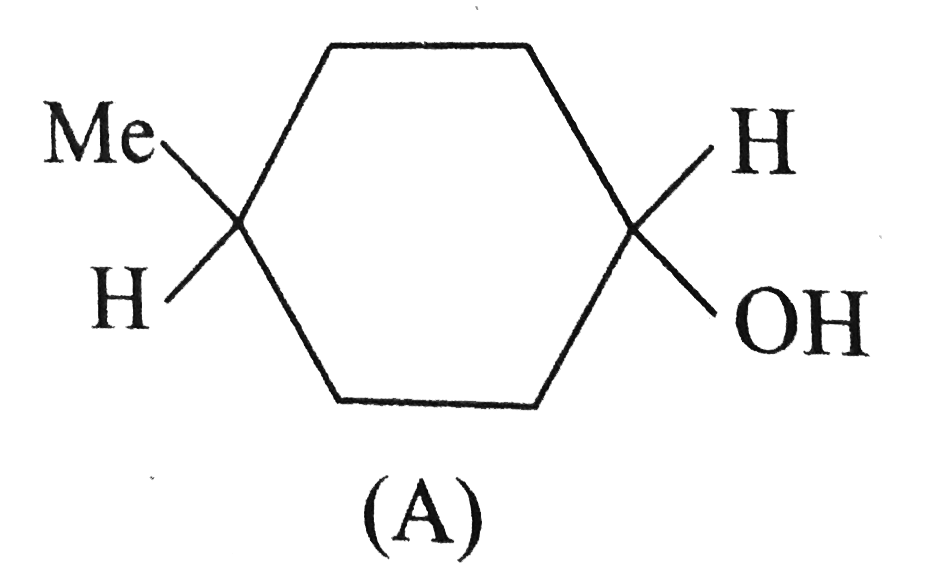
Dehydration of `(A)` with conc. `H_(2)SO_(4)` gives a compound that exists in two isomeric forms. Give the structurest of both the isomers.
View Solution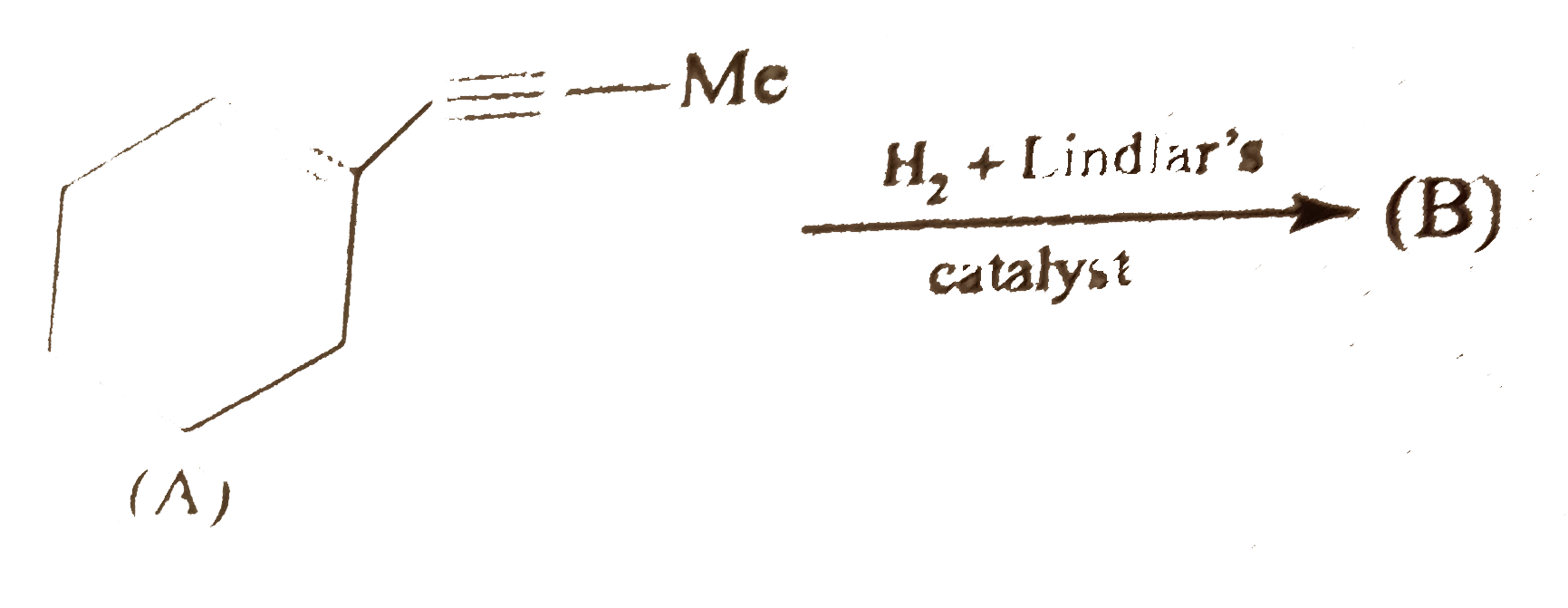
The product `(B)` is `:`
`a.`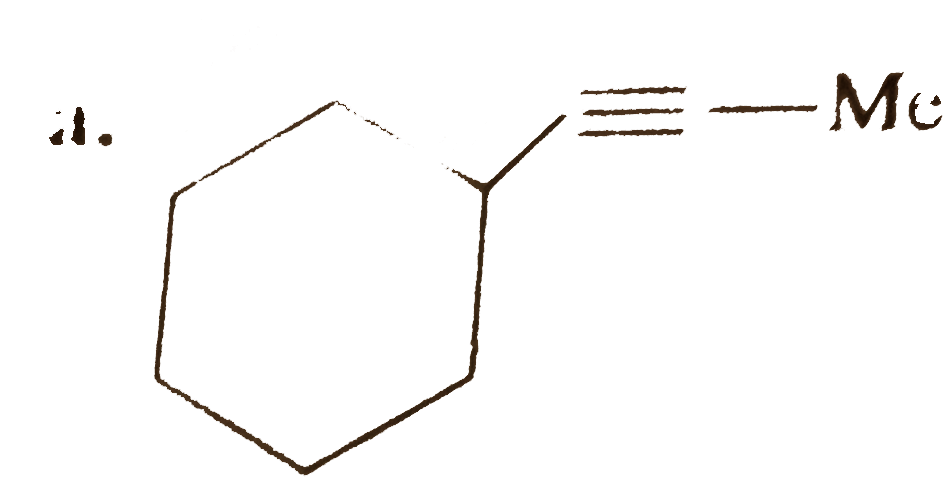
`b.`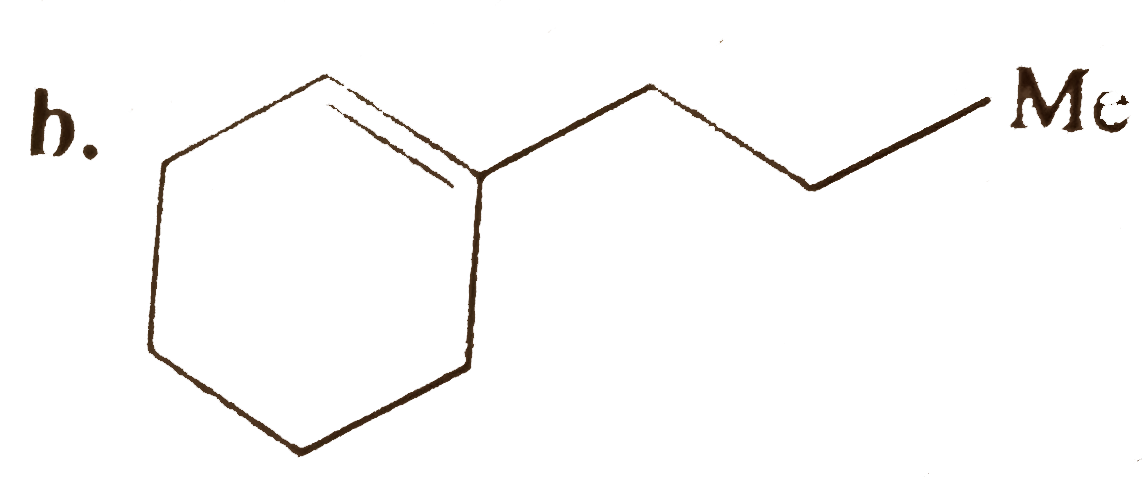
c
`d.`
View SolutionIdentify `(A)`.
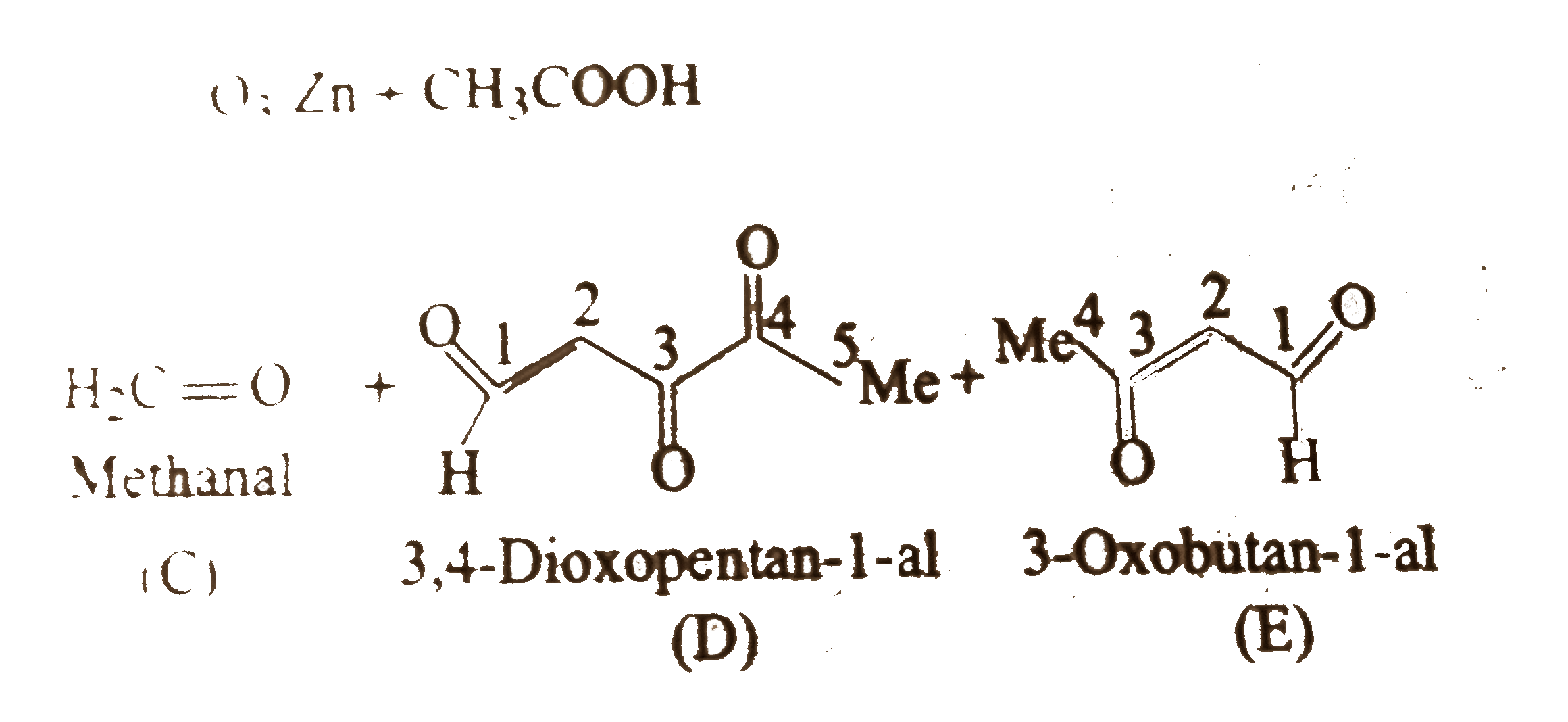
View Solution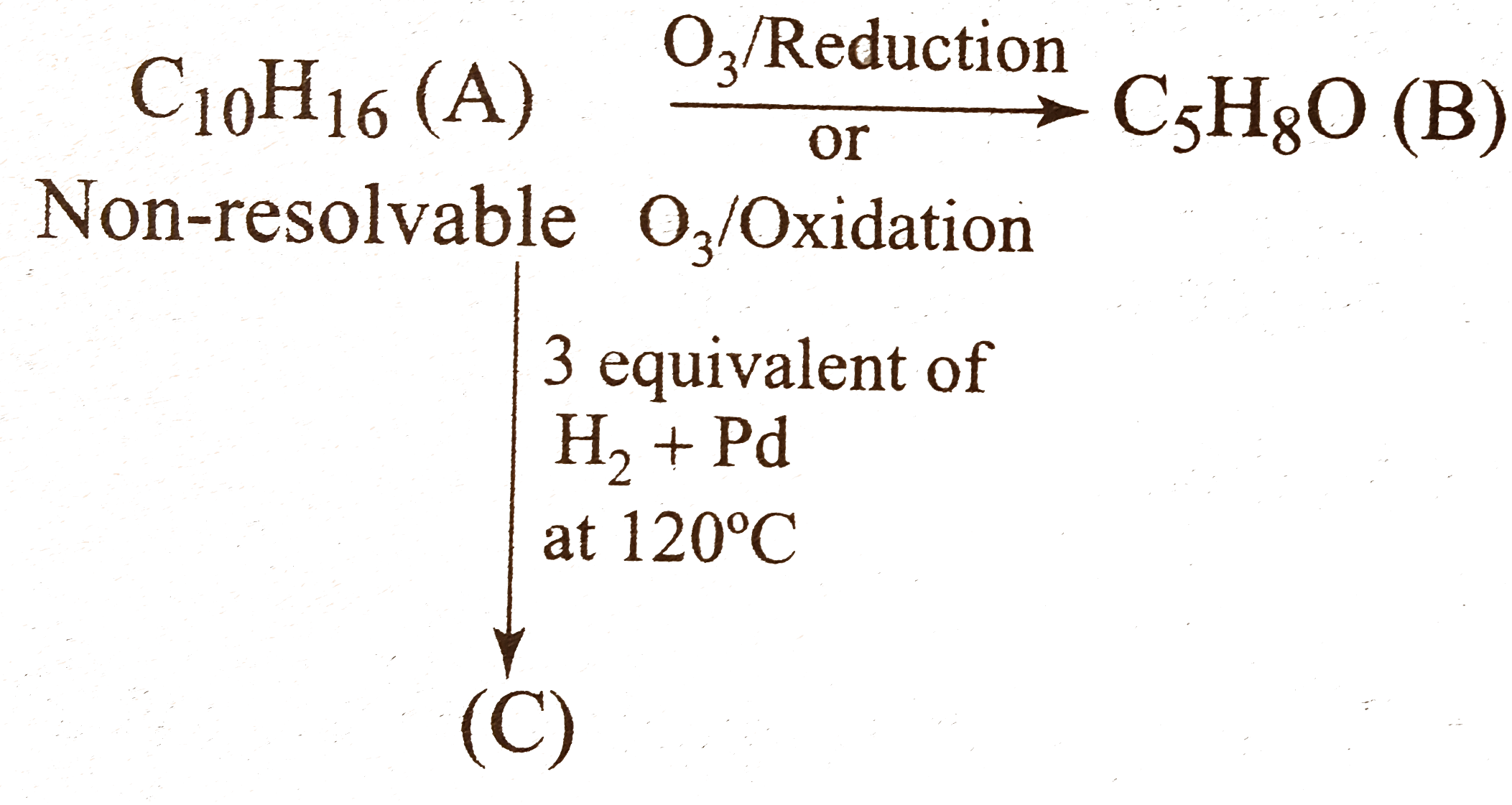
a. Write all the possible structures of `(A)` and `(B)`.
b. Write all the possible strutucres of `(A)` and `(B)`, if both are resolvable.
View Solution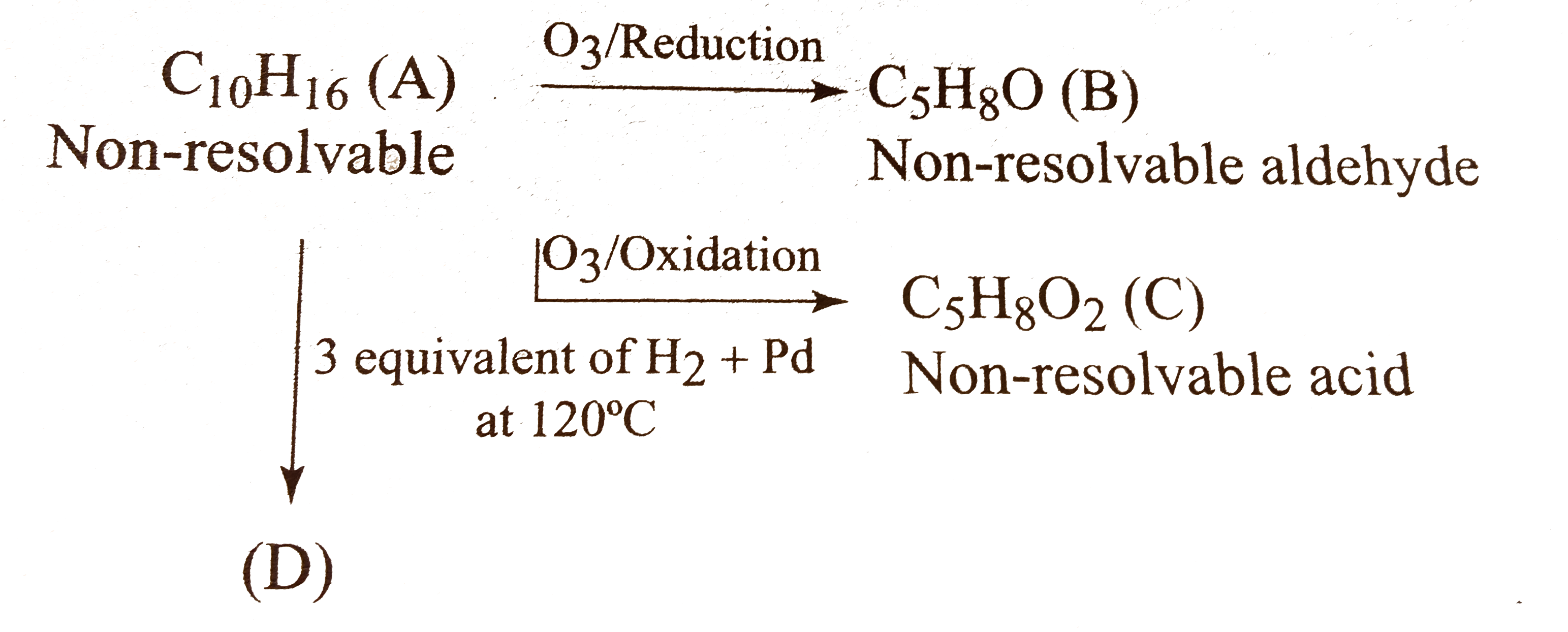
`a.` Write all the possible structures of `(A), (B)` and `(C)`
`b.` Write all the possible structures of `(A),(B)`, and `(C)` if all are resolvable.
`c.` Write the possible structures of `(D)` in both cases.
View SolutionGive the number of stereoismoers of `(A)` in the following reactions.
`a.` `(A)(C_(7)H_(12))overset(O_(3)//o x id. )rarrunderset((B))(Acet on e)+underset((C))(Oxalic a c i d) +underset((D))(Acetic aci d)`
`b.` `(A)(C_(8)H_(14))overset(O_(3)//o x id. )rarrunderset((B))(Butane-2-en e)+underset((C))(Oxalic a c i d) +underset((D))(Acetic aci d)`
`c.` `(A)(C_(6)H_(10))overset(O_(3)//o x id. )rarrunderset((B))(Oxalic a c i d) +underset((C))(Acetic aci d)`
`d.` `(A)(C_(9)H_(16))overset(O_(3)//o x id. )rarrunderset((B))(Butane-2-on e)+underset((C))(Pyruvic aci d) +underset((D))(Acetic aci d)`
`e.` `(A)(C_(10)H_(18))overset(O_(3)//o x id. )rarrunderset((B))(Butane-2-on e)+underset((C))(Pyruvic aci d) +underset((D))(Propanoic aci d)`
View SolutionComplete the following reaction with appropriate reagents.
`a.`
`b.`
View SolutionExplain the formation of the products giving the structures of the intermediates.
`a.`
`b.`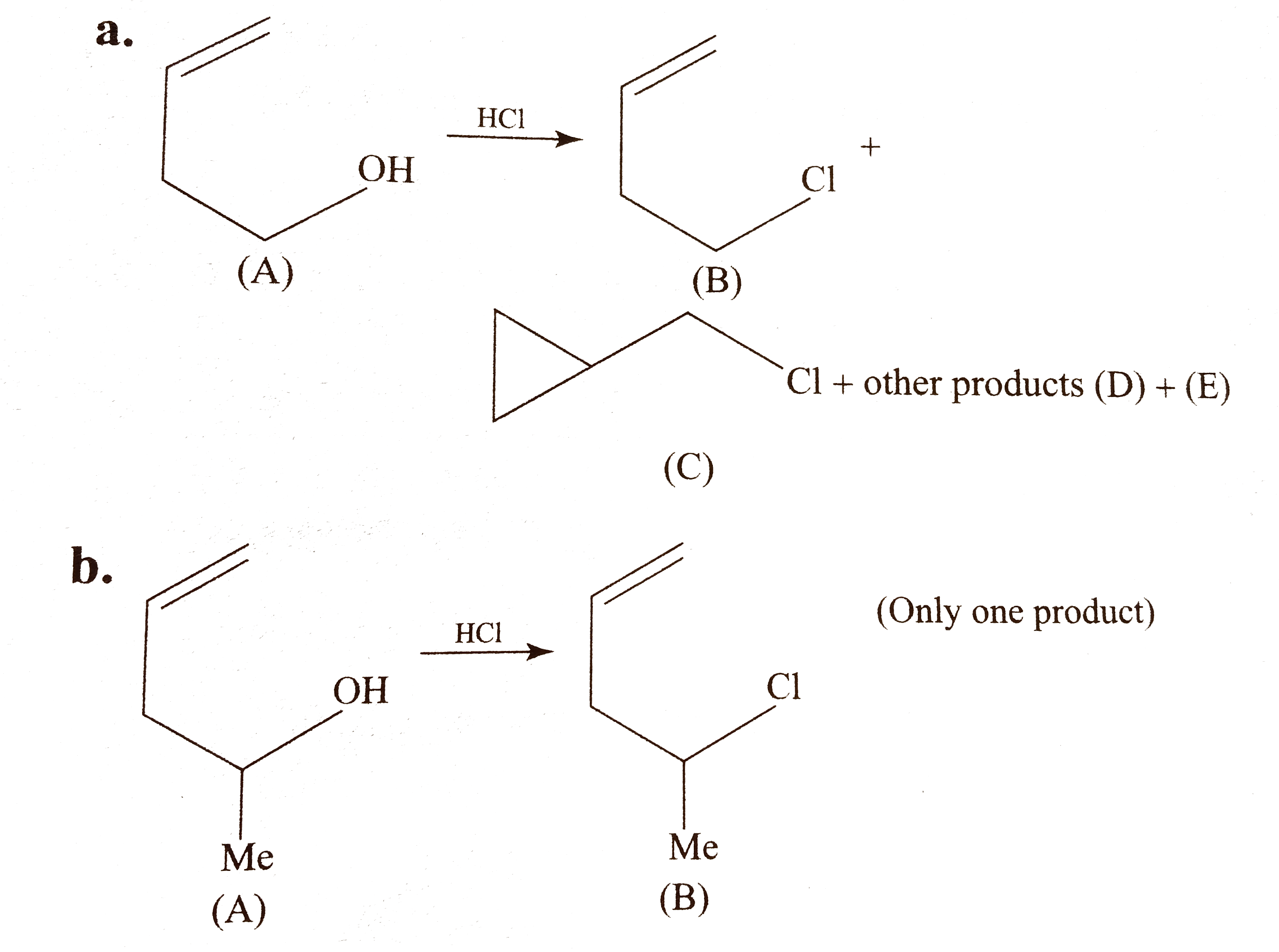
View SolutionWrite the intermediate step and give the product of the following reaction.
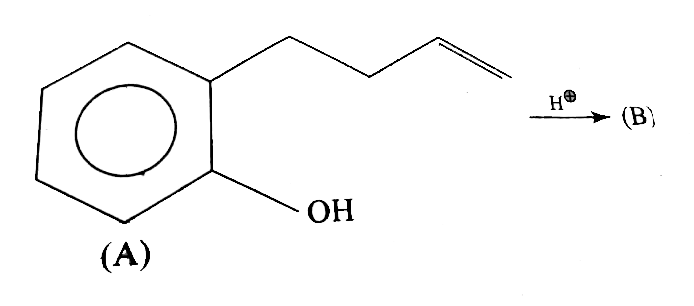
View SolutionComplete the following reactions `:`
`a.`
`b.`
`c.`
`d.`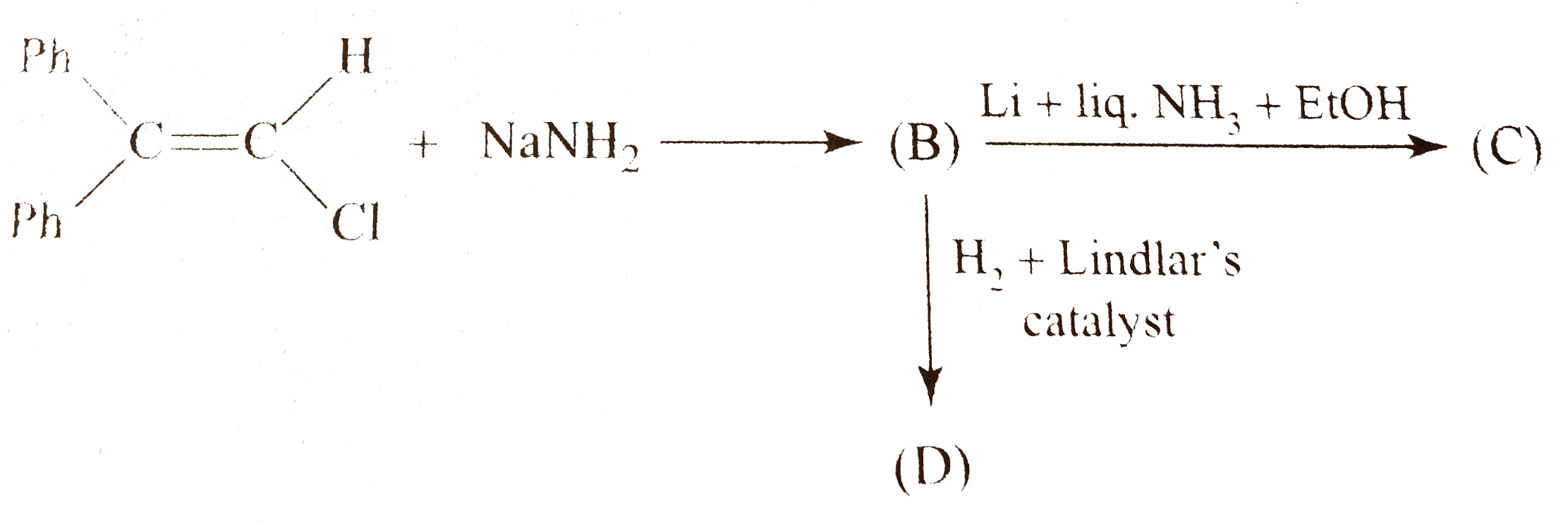
`e.`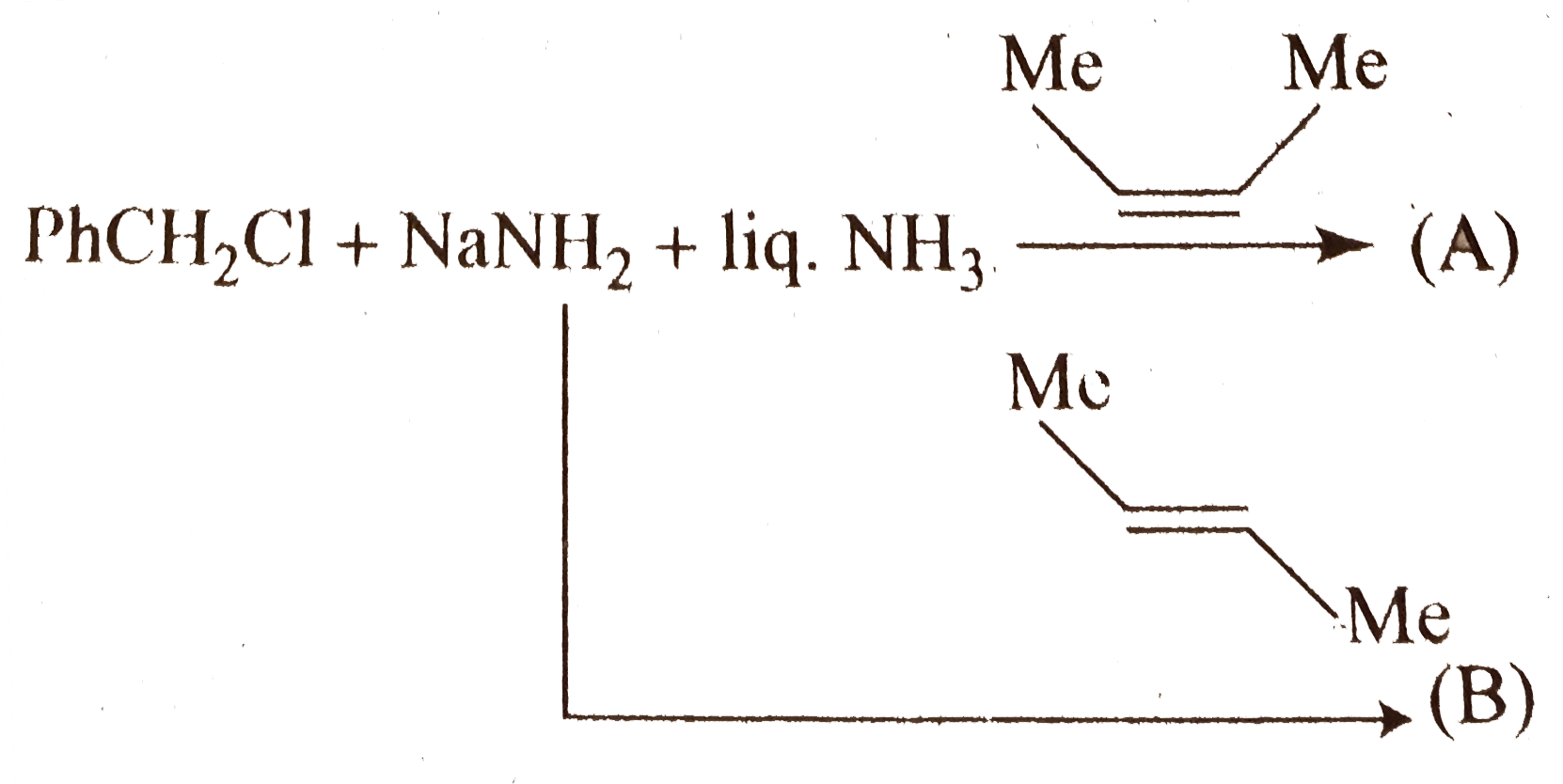
View Solution`a.`

Identigy `(B)` and `(C)` and also explain the formation of `C^(14)(C^(**))` in the compound `(C)`.
View SolutionComplete the following reaction `:`

View SolutionIdentify the products in the following reactions giving their stereoisomers `(` if any `)` .
`a.`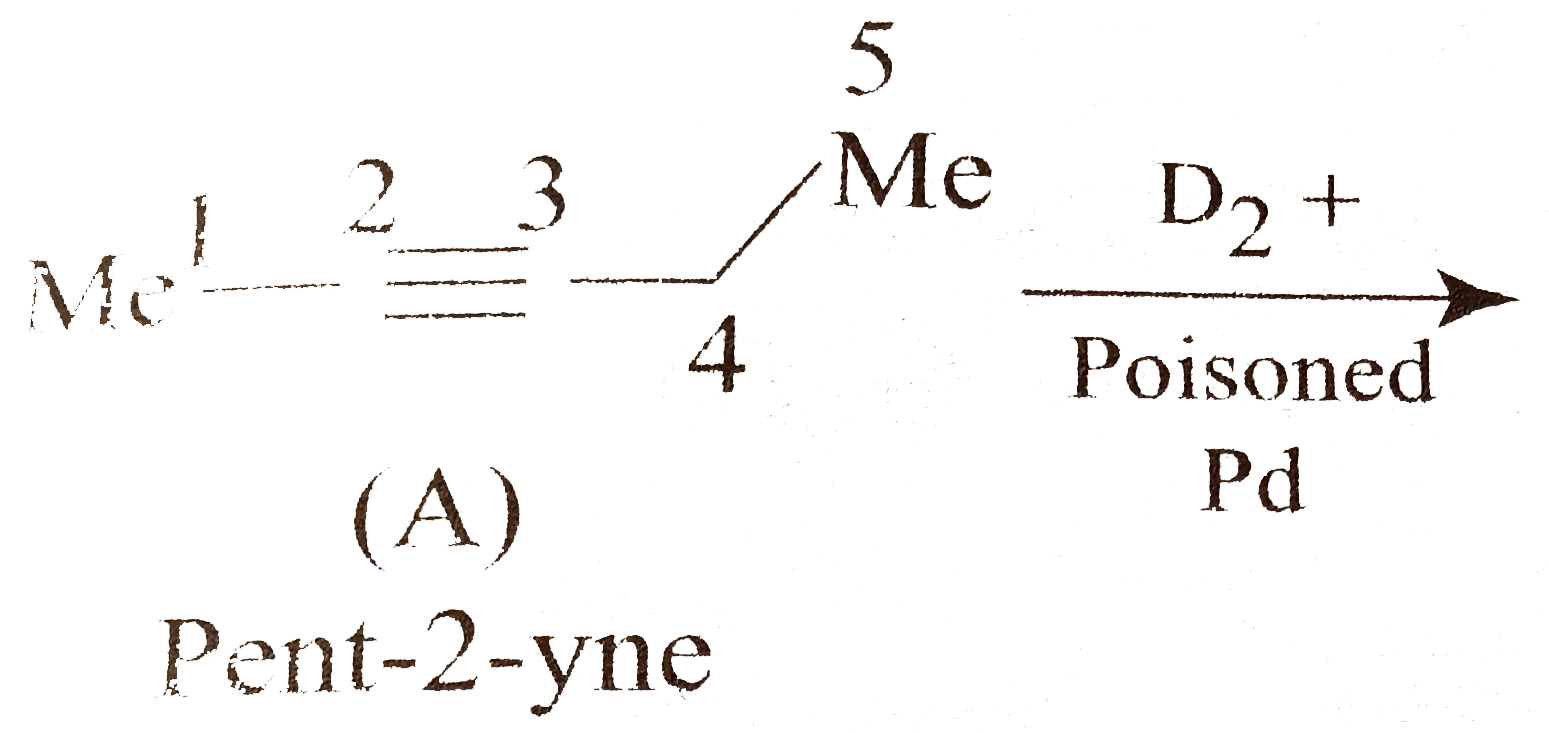
`(B) overset(H_(2)+Pt)rarrC` `(` No. of isomers `)`
`b.` `(B)(` from Problem `A)` `overset(Baeyer's)underset(reag e nt)rarr`
`(D)+(E)(` Colour of precipitate`)`
`c.` `(B) overset(PhCO_(3)H)underset (+H_(2)o)rarr(D)`
`d.` `(A)underset(Na+liq. ND_(3)+EtOH)rarr(F) overset(Alk. KMnO_(4))underset(OSO_(4)//NaHSO_(3)
or
PhCO_(3)H//H_(2)O)rarr(D)`
View SolutionIdentify `(A), (B), ` and `(C)` in the following reaction.

View SolutionWhat is the numberical value of `(B)` and `(D)` and what types of isomers are they ?
`a.`
`b.`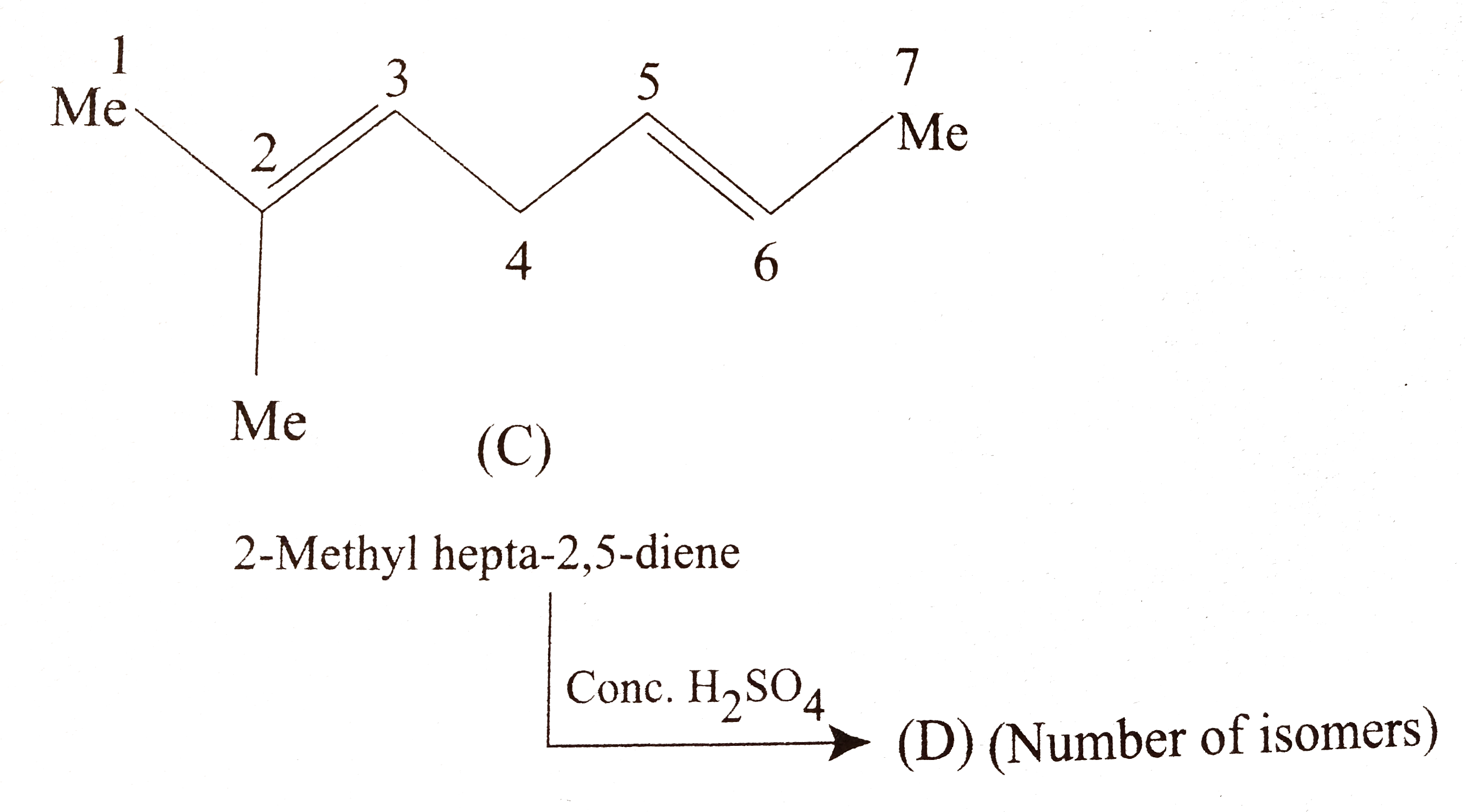
View SolutionComplete the following reaction `:`
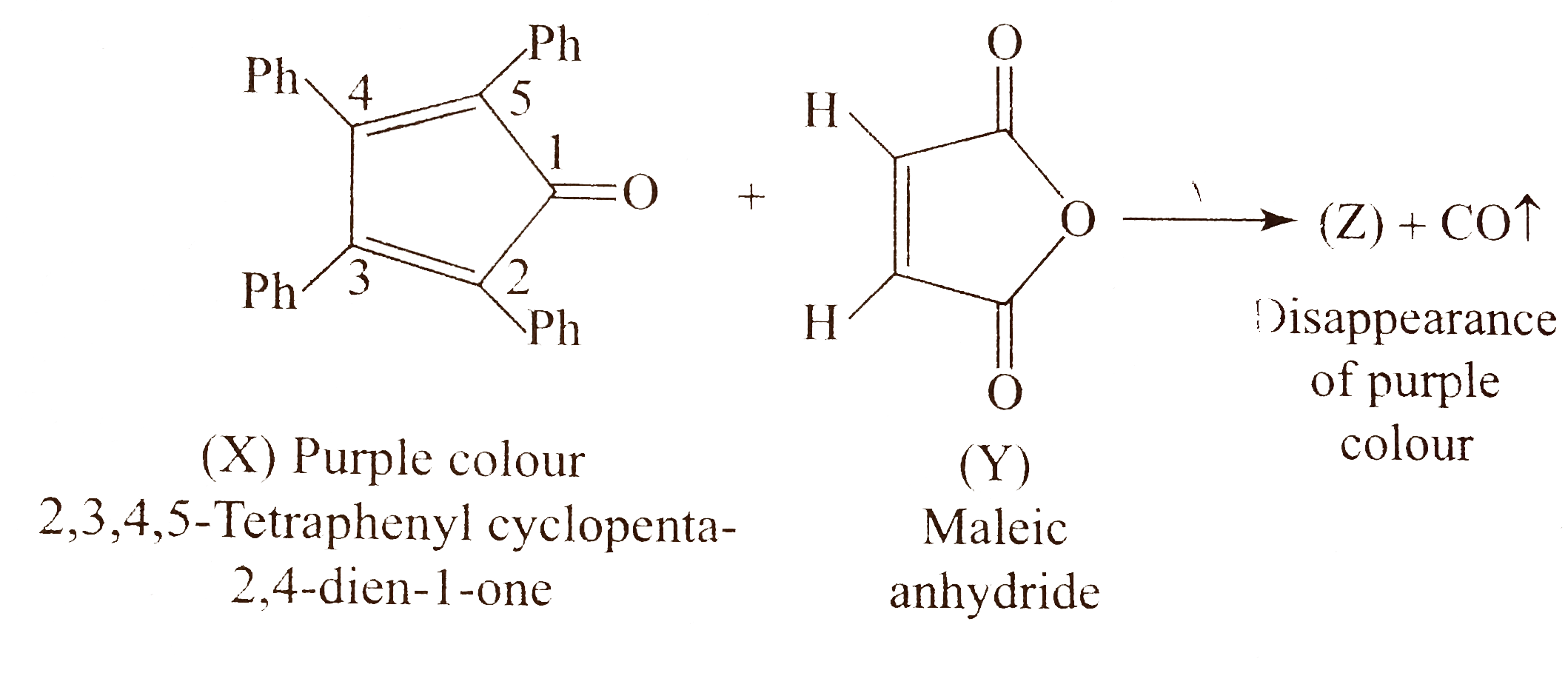
View SolutionComplete the following reaction `:`
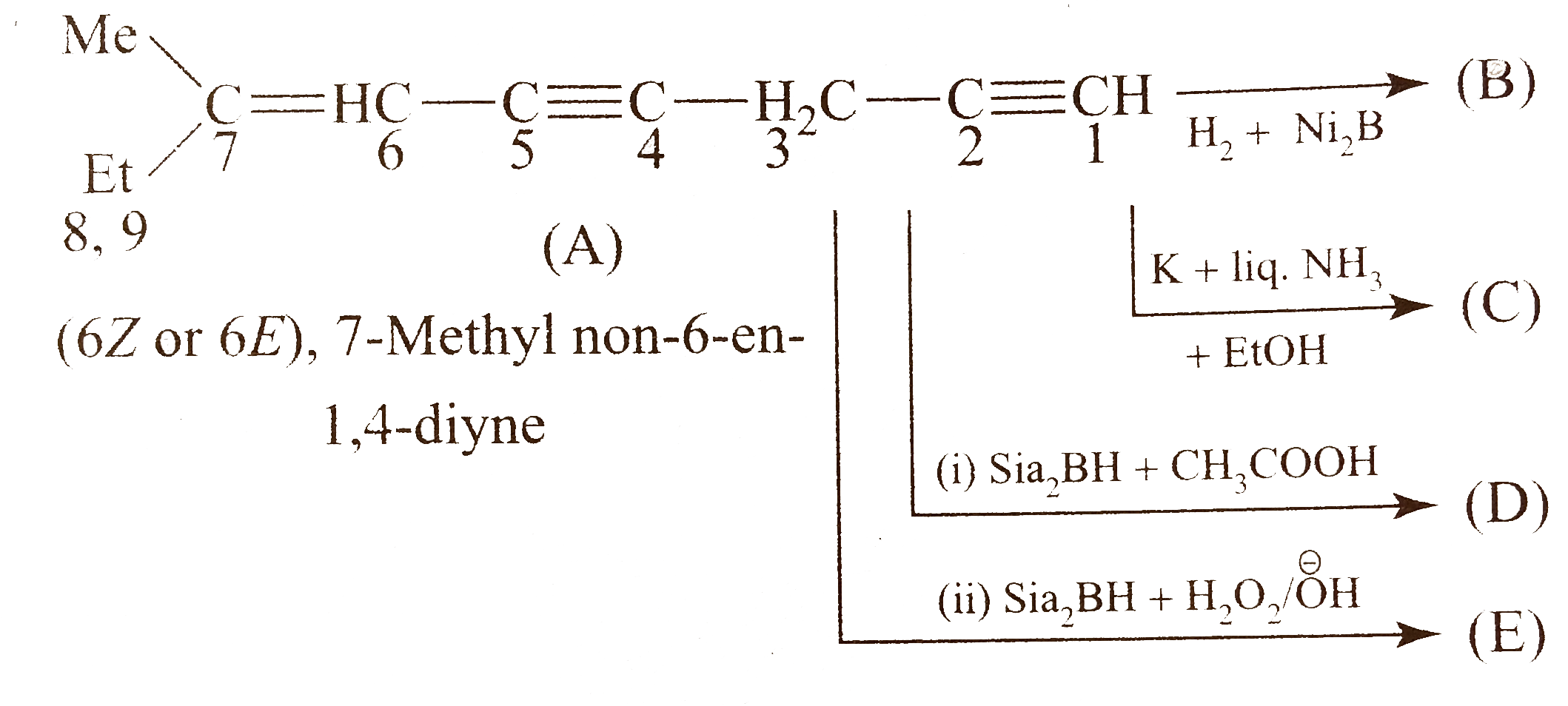
View SolutionIdentify `(A)` to `(H)`.

View SolutionWrite the product with its mechanism.
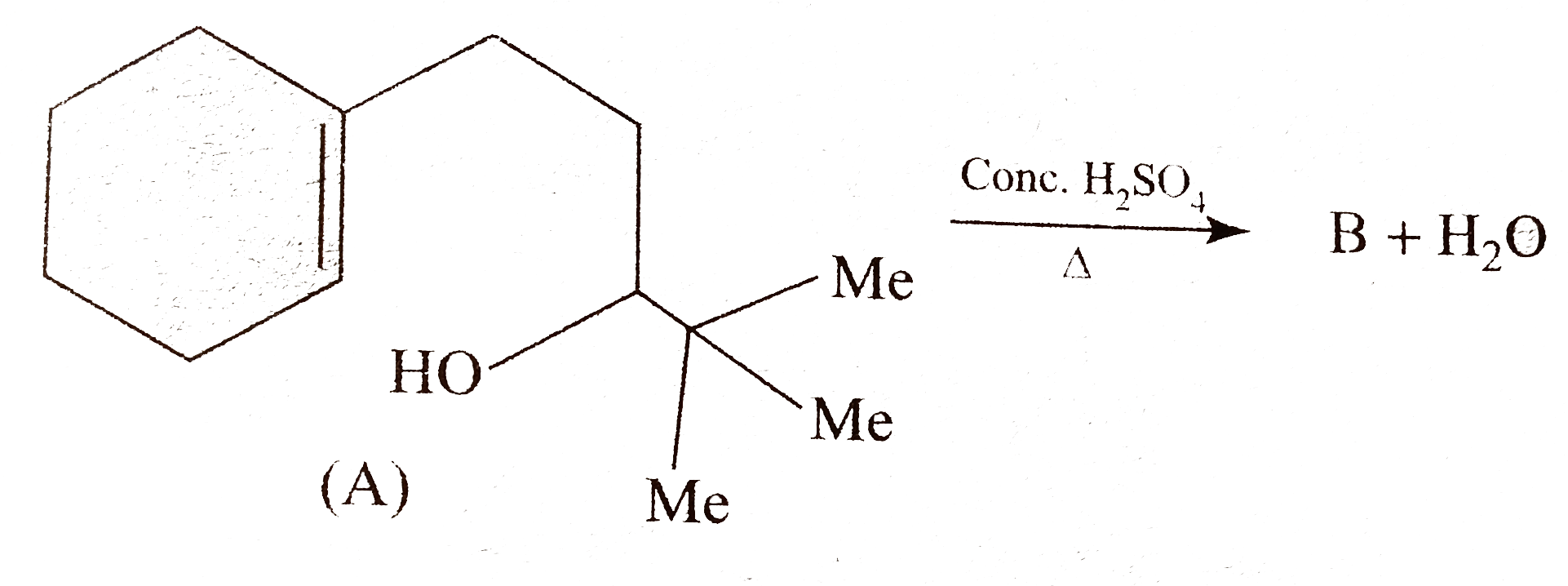
View SolutionIdentify `(A)` to `(D)`.
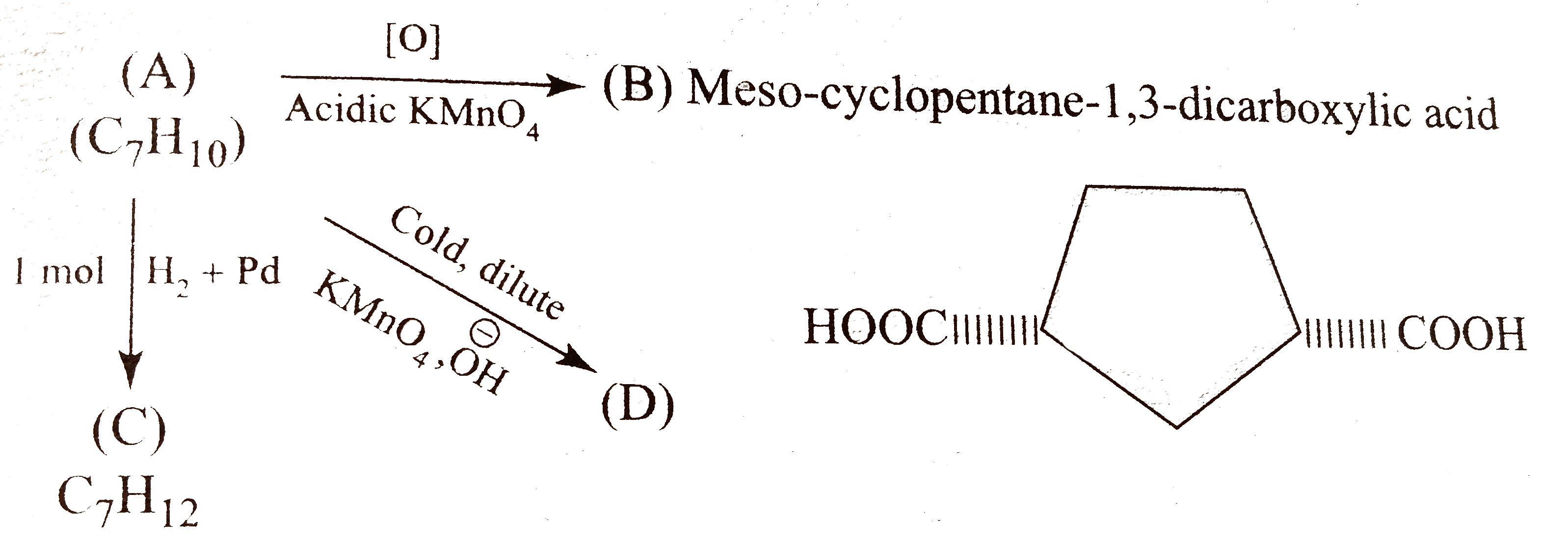
View SolutionIdentify `(A)` to `(G)`.
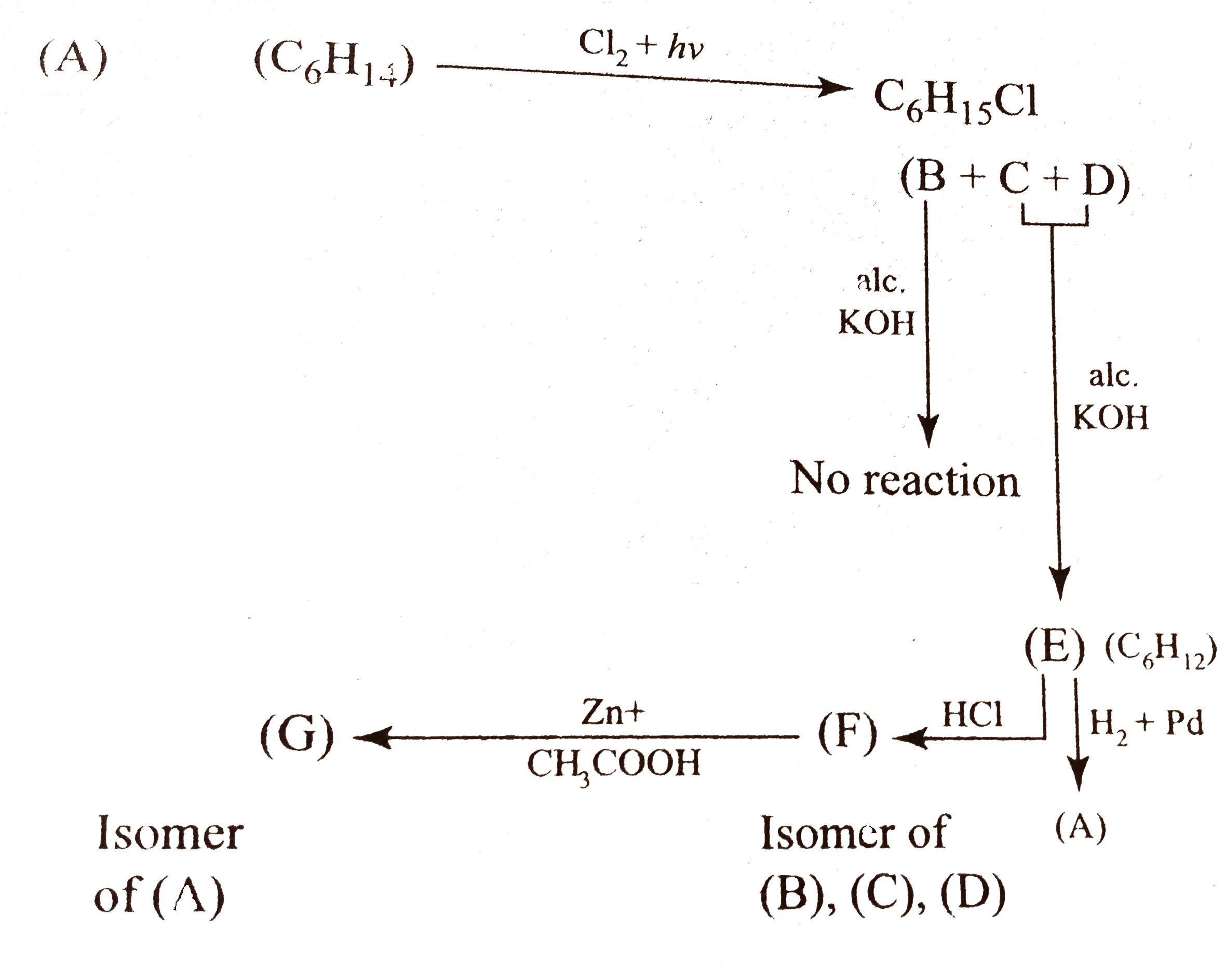
View Solution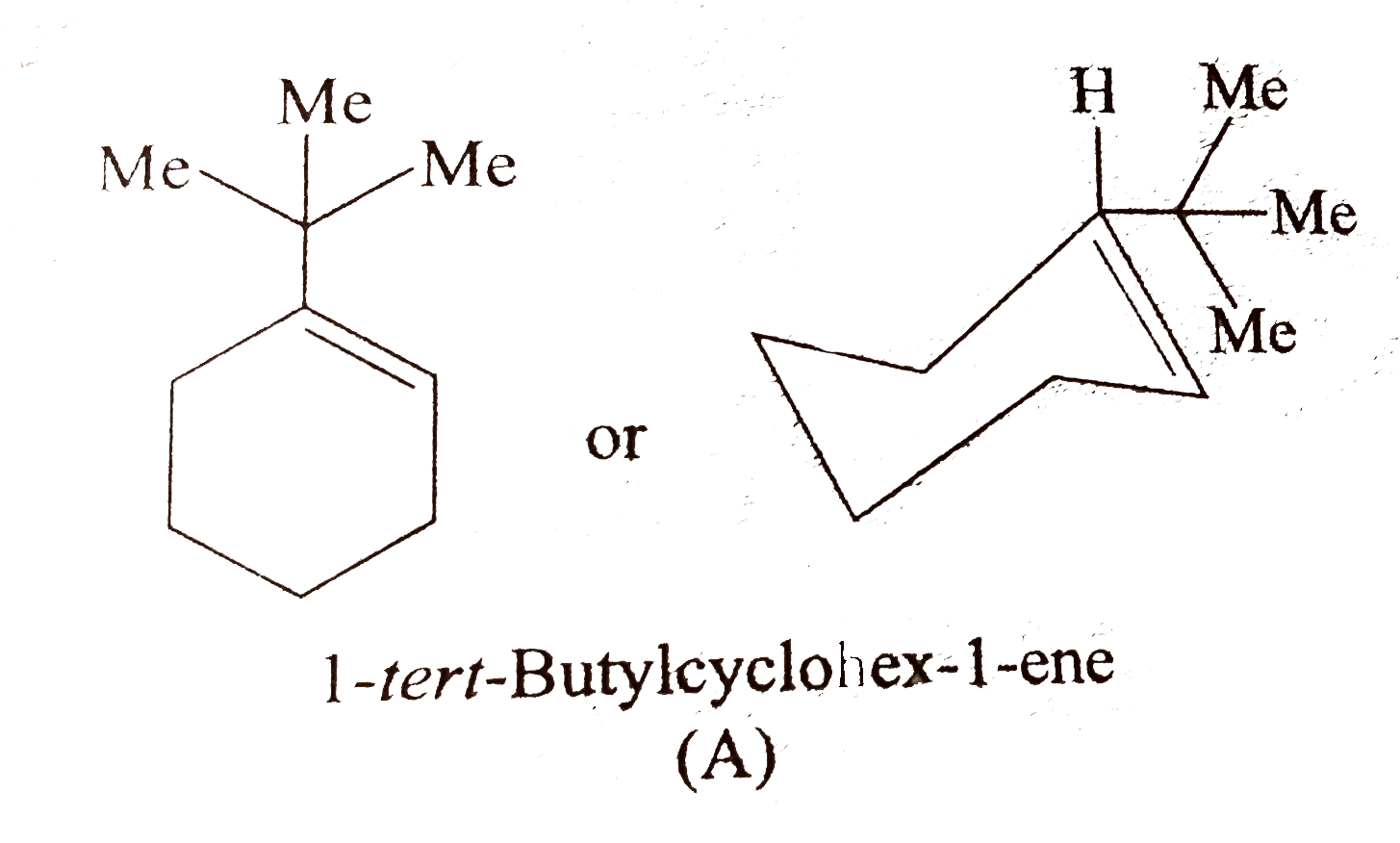
Bulky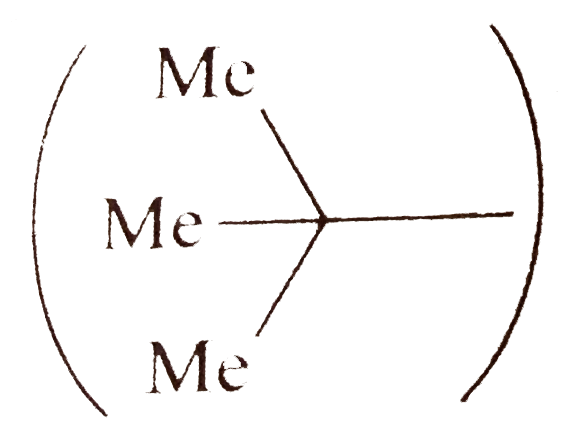 `t-`butyl group is always on the equatorial position because of less steric strain, as the group is out of the ring plane.
`t-`butyl group is always on the equatorial position because of less steric strain, as the group is out of the ring plane.
Write the major products and conformational structures or stereoisomers `(` if any `)` when `(A)` reacts with the following reagaents `:`
a. `O_(3)//Me_(2)S` b. `D_(2)+Pt` c. `BD_(3)+THF` and then `CH_(3)COOT` d. `BH_(3)+THF` then `H_(2)O_(2)+O^(c-)H`
e. `Hg(OAc)_(2)+THF+H_(2)O` then `NaBH_(4)+O^(c-)H` f. Magnesimu perphthalate then `H_(3)O(c-), H_(2)O`
g. `OsO_(4)//aq. NaHSO_(3)` , h. `Br_(2),C CI_(4)` , i. `Br_(2), H_(2)O` , j. `ICI` , k. `Dil. H_(2)SO_(4)`
View SolutionWhich of the following show `G.I.`?
`a.`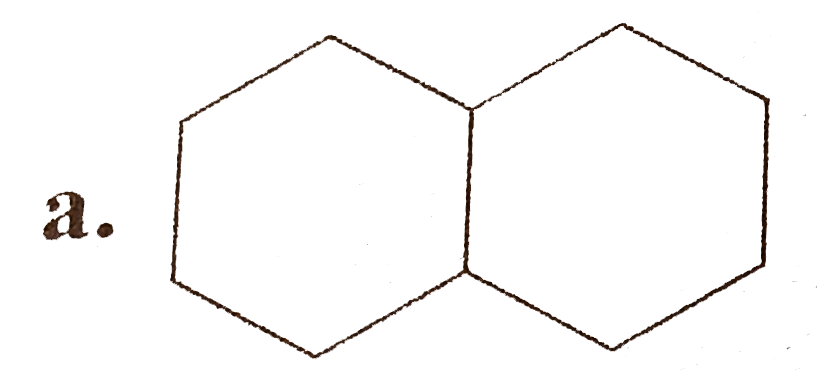
`b.`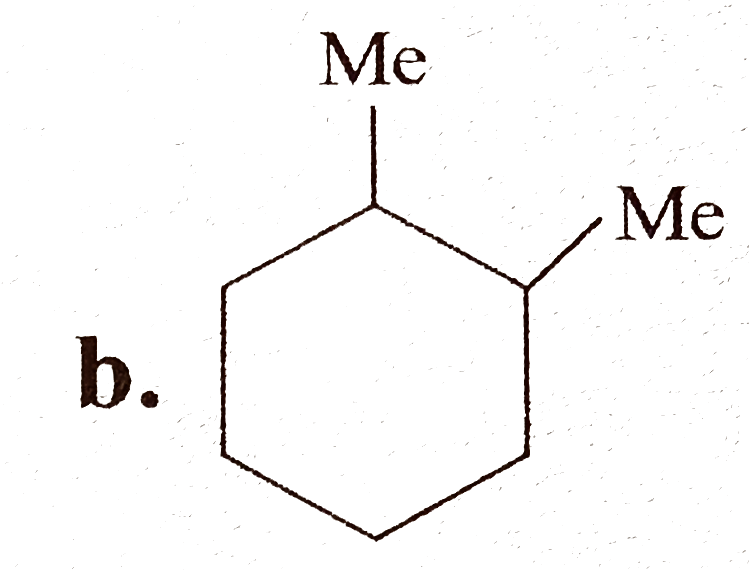
`c.`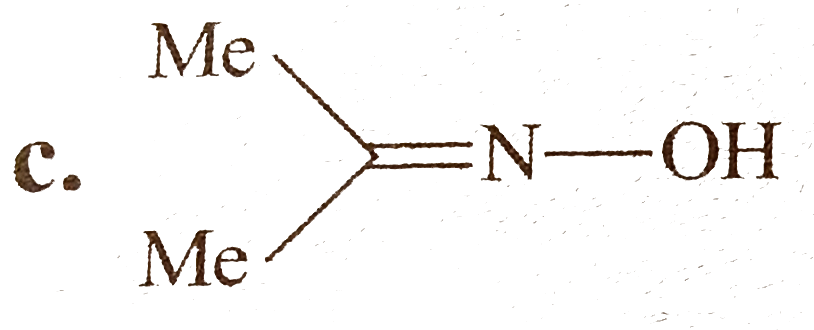
`d.`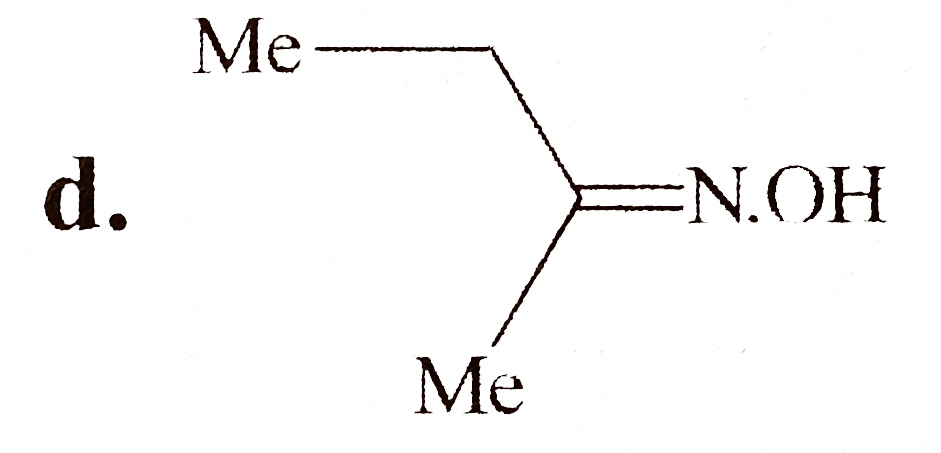
`e.`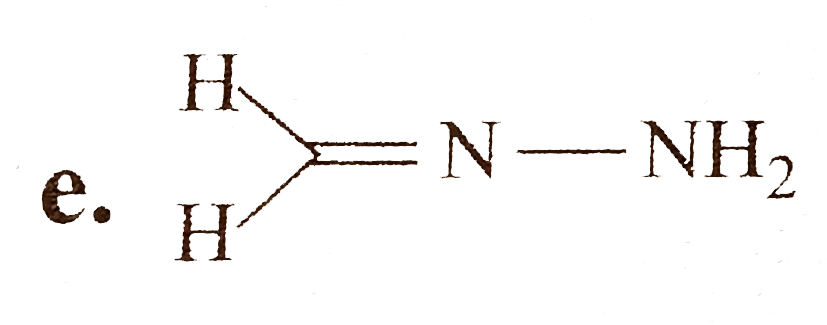
`f.`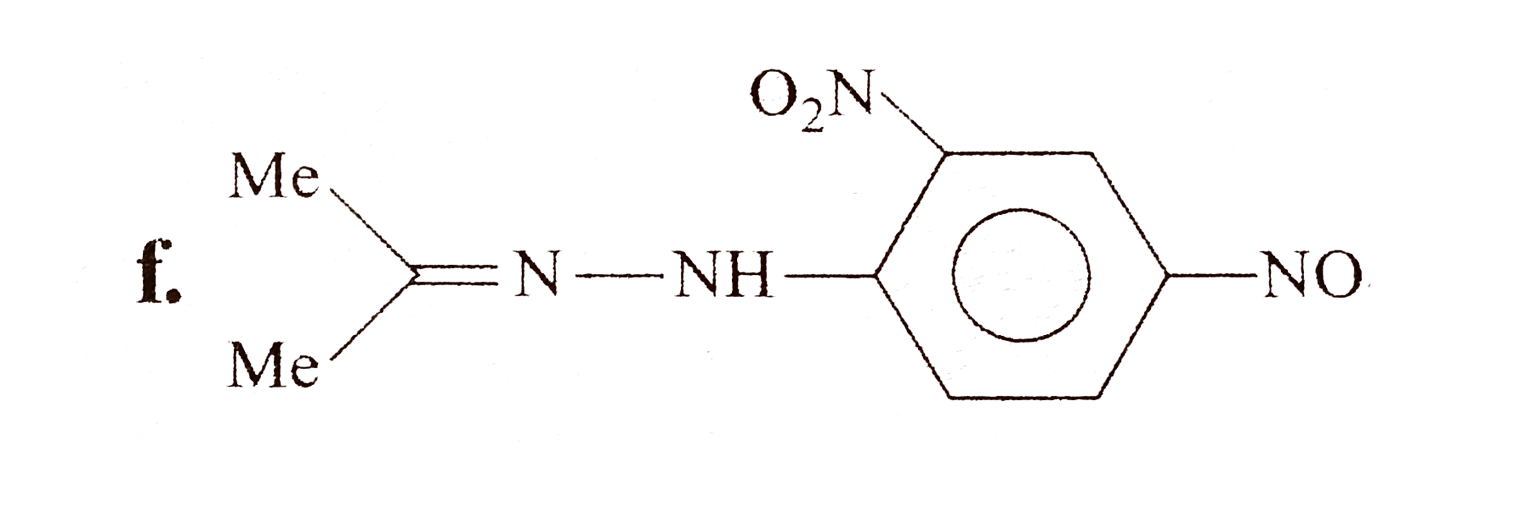
`g.`
`h.`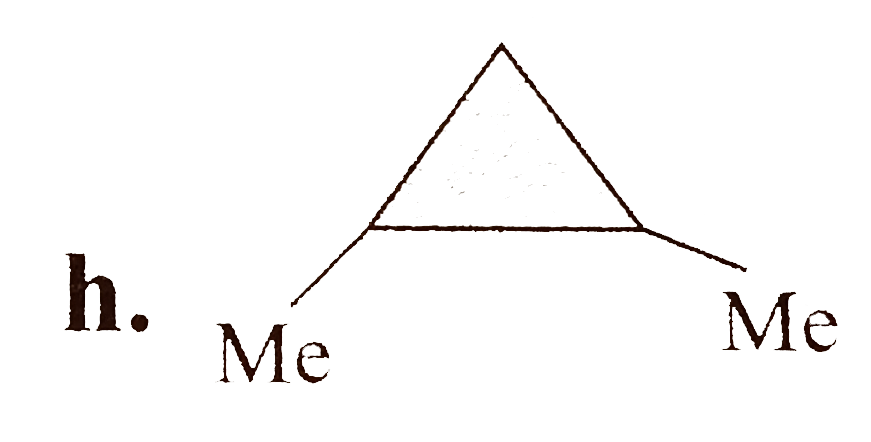
`i.`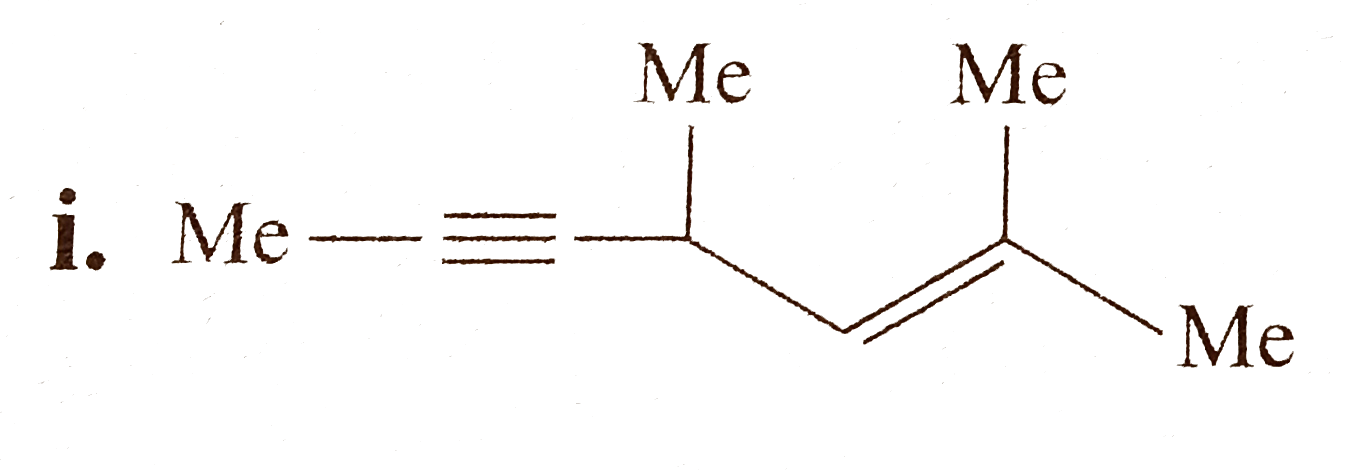
`j.`
`k.`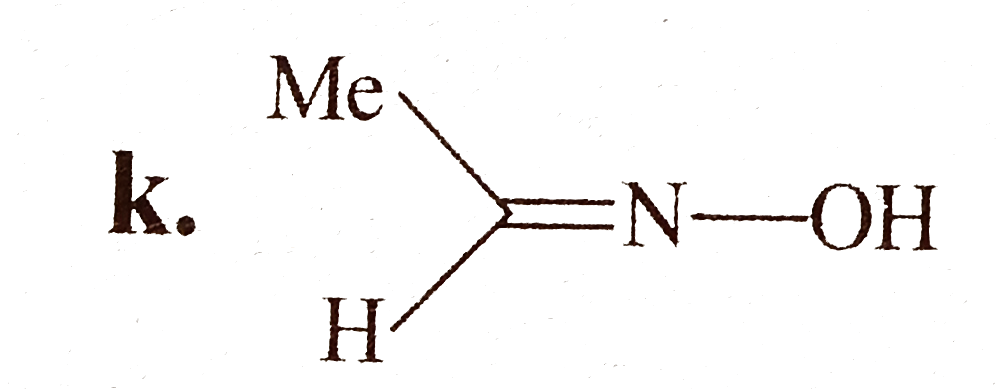
`l.`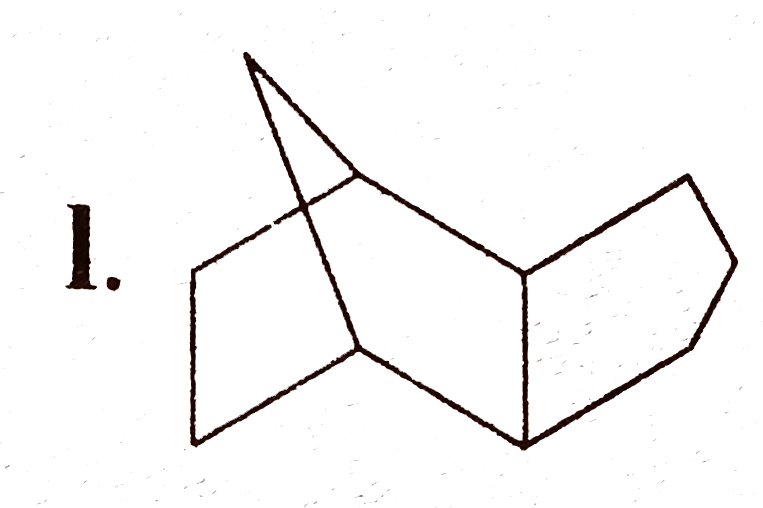
View SolutionGive `IUPAC` name to each to the following using `E` or `Z` designations.
`a.`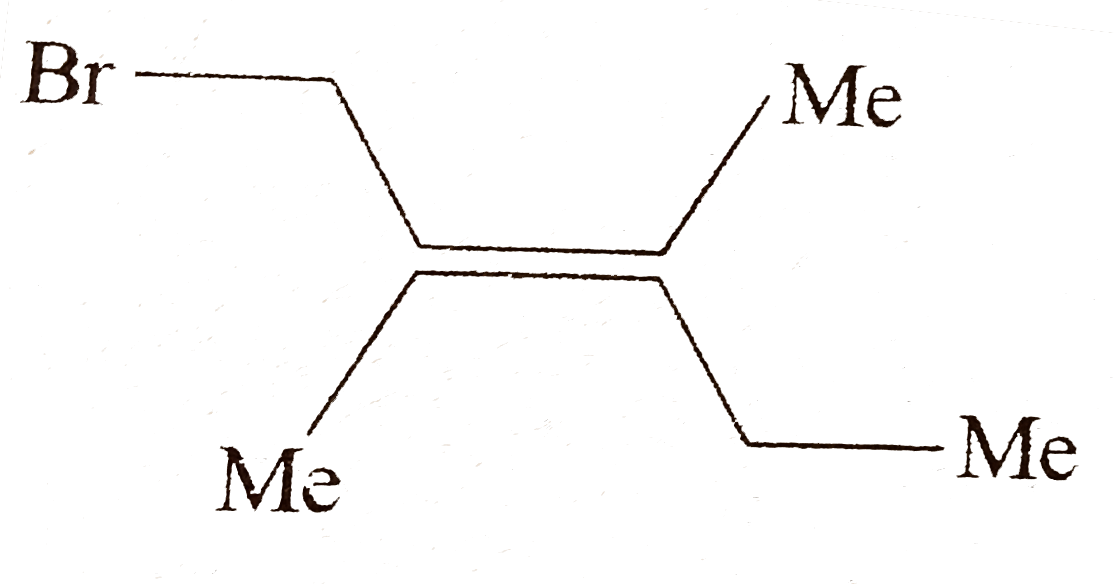
`b.`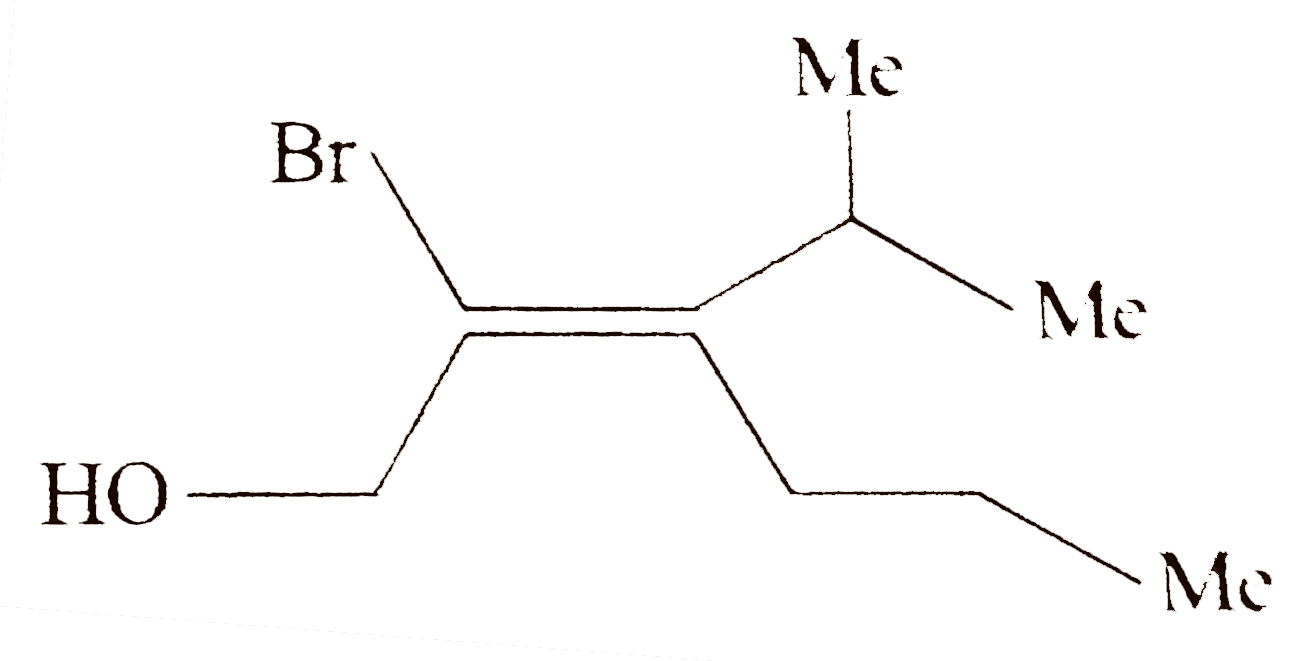
`c.`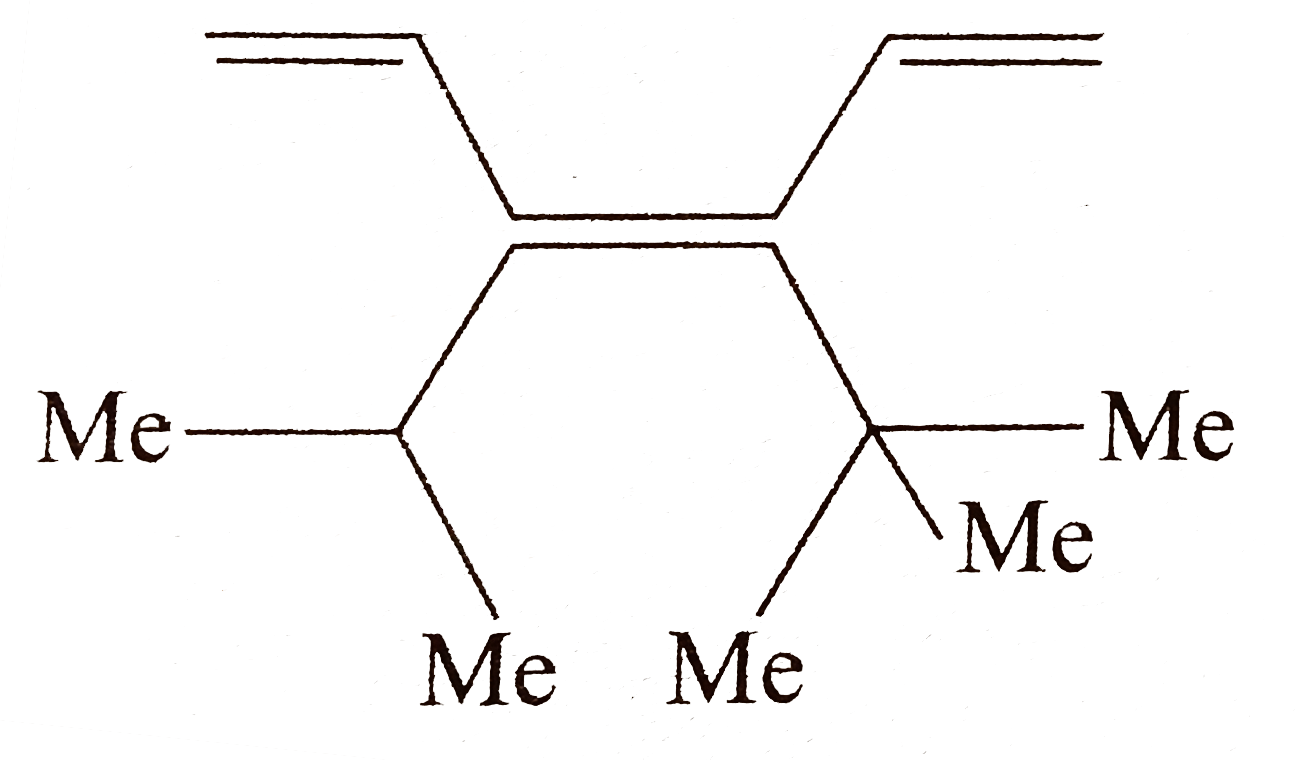
View SolutionGive `IUPAC` names for the following using `E` and `Z` designations.
`a.`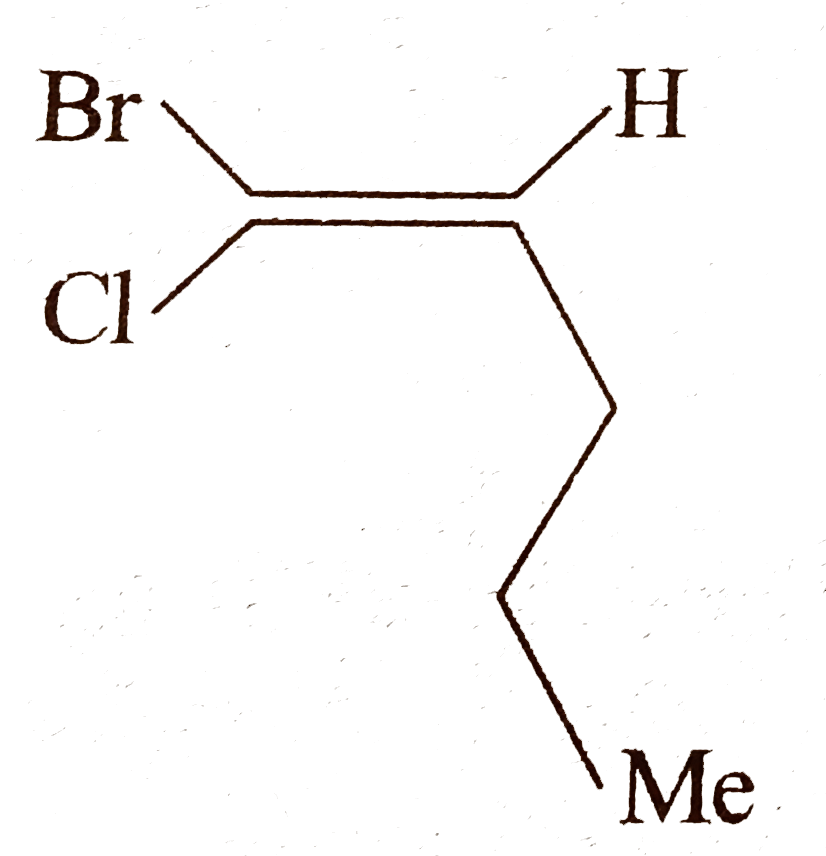 , `b.`
, `b.` 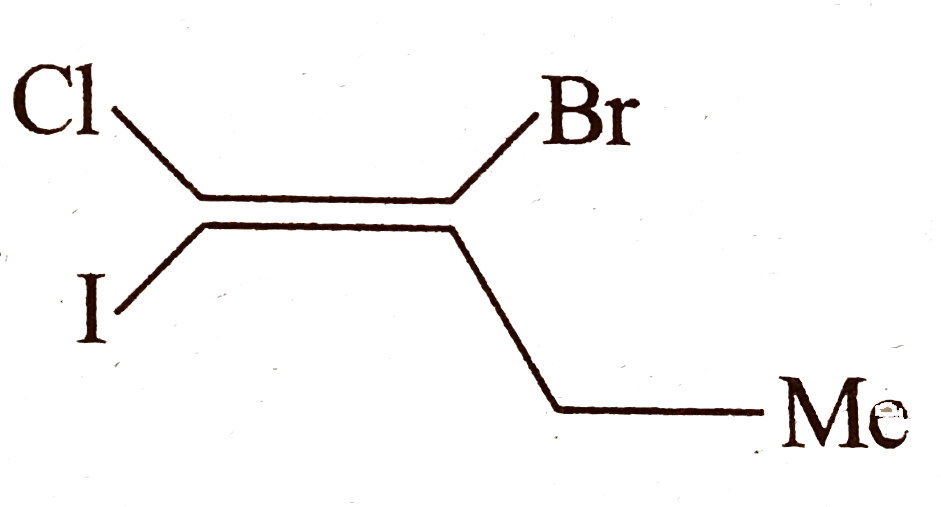
`c.`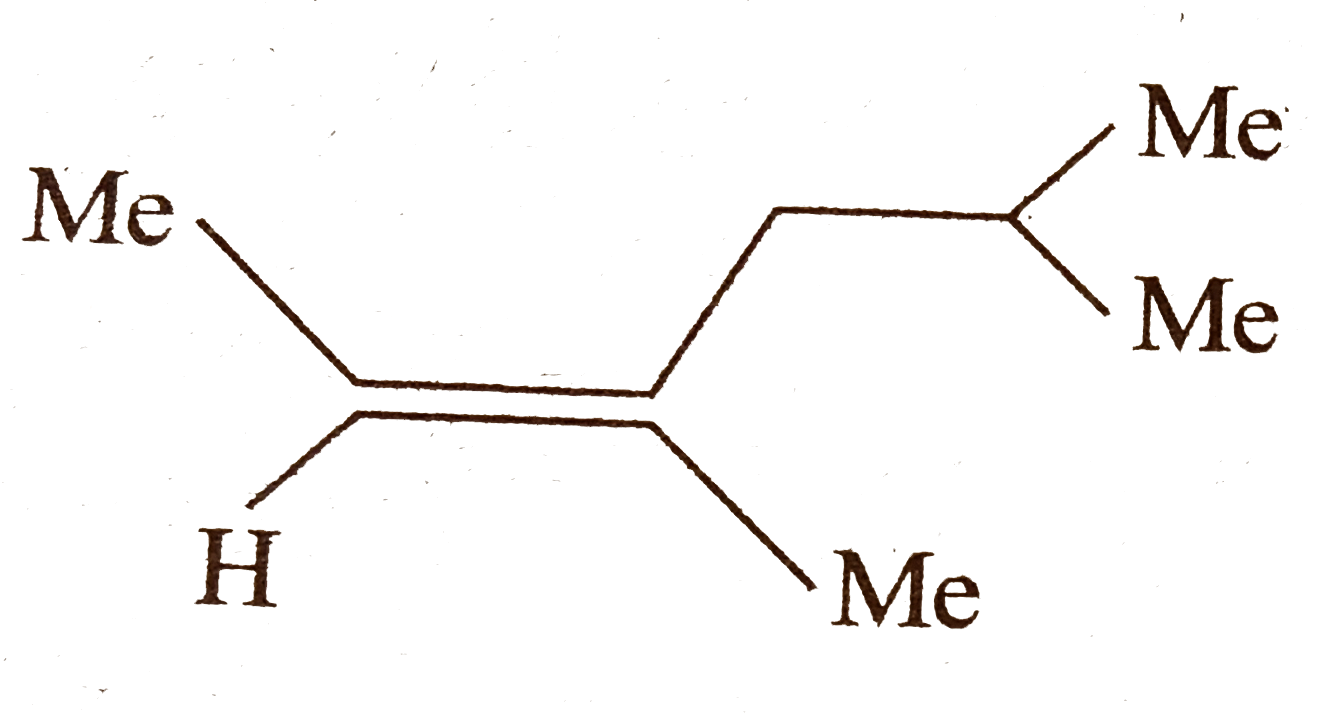 , `d.`
, `d.` 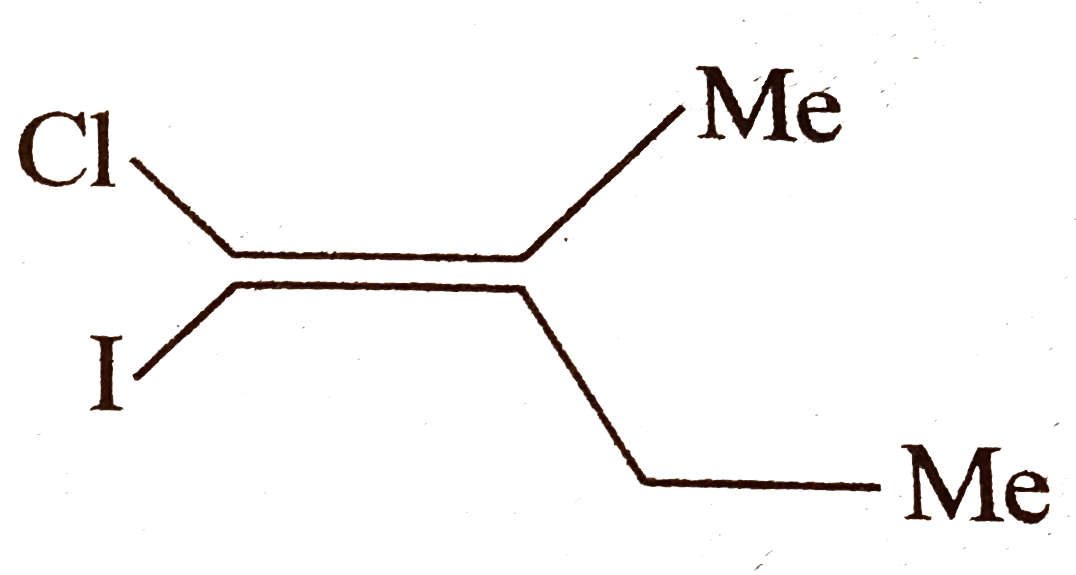
View SolutionGive `IUPAC` name of the following using `E//Z` and `R//S` designations.
`a.`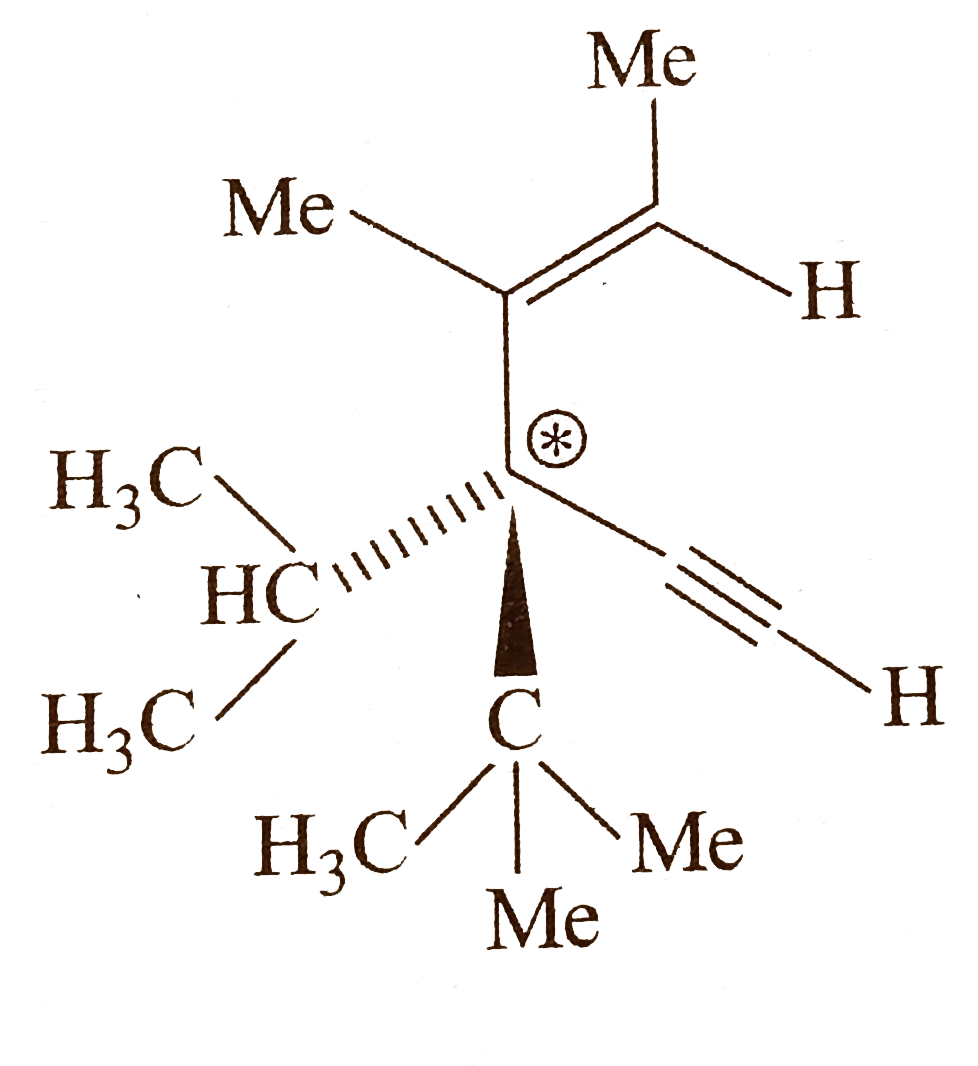 , `b.`
, `b.` 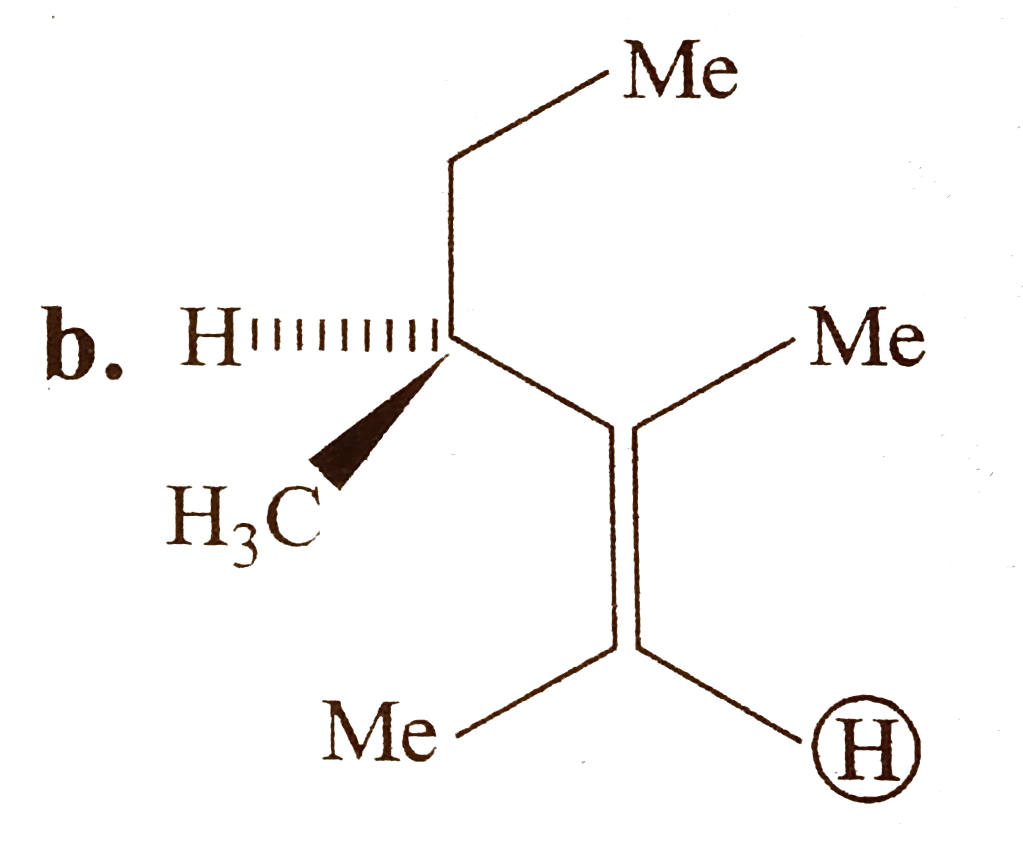
`c.`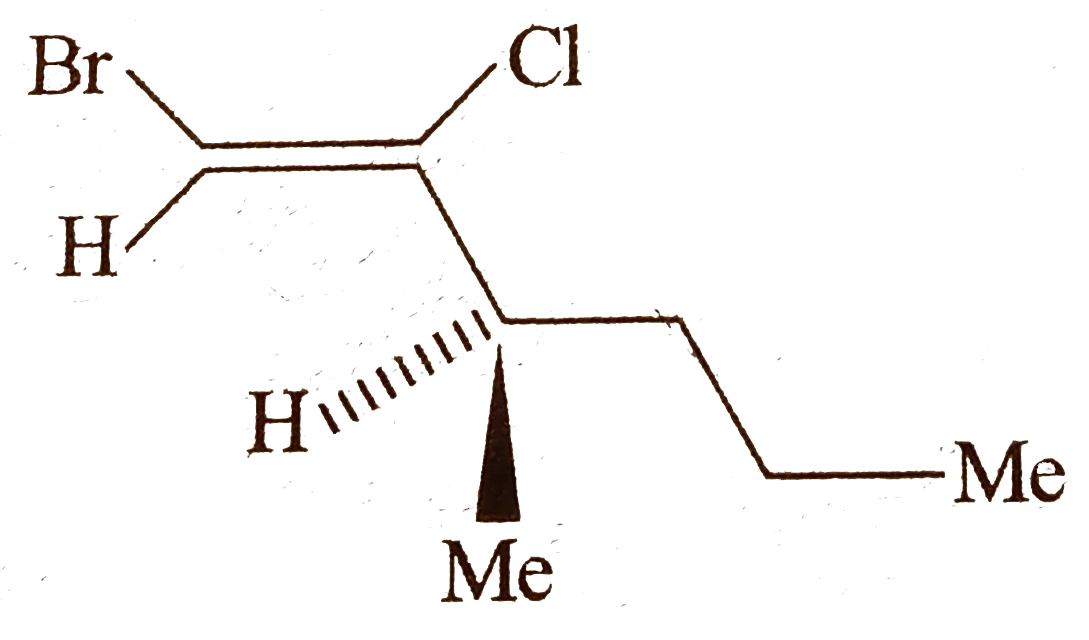
View SolutionComplete the following reaction.
`a.`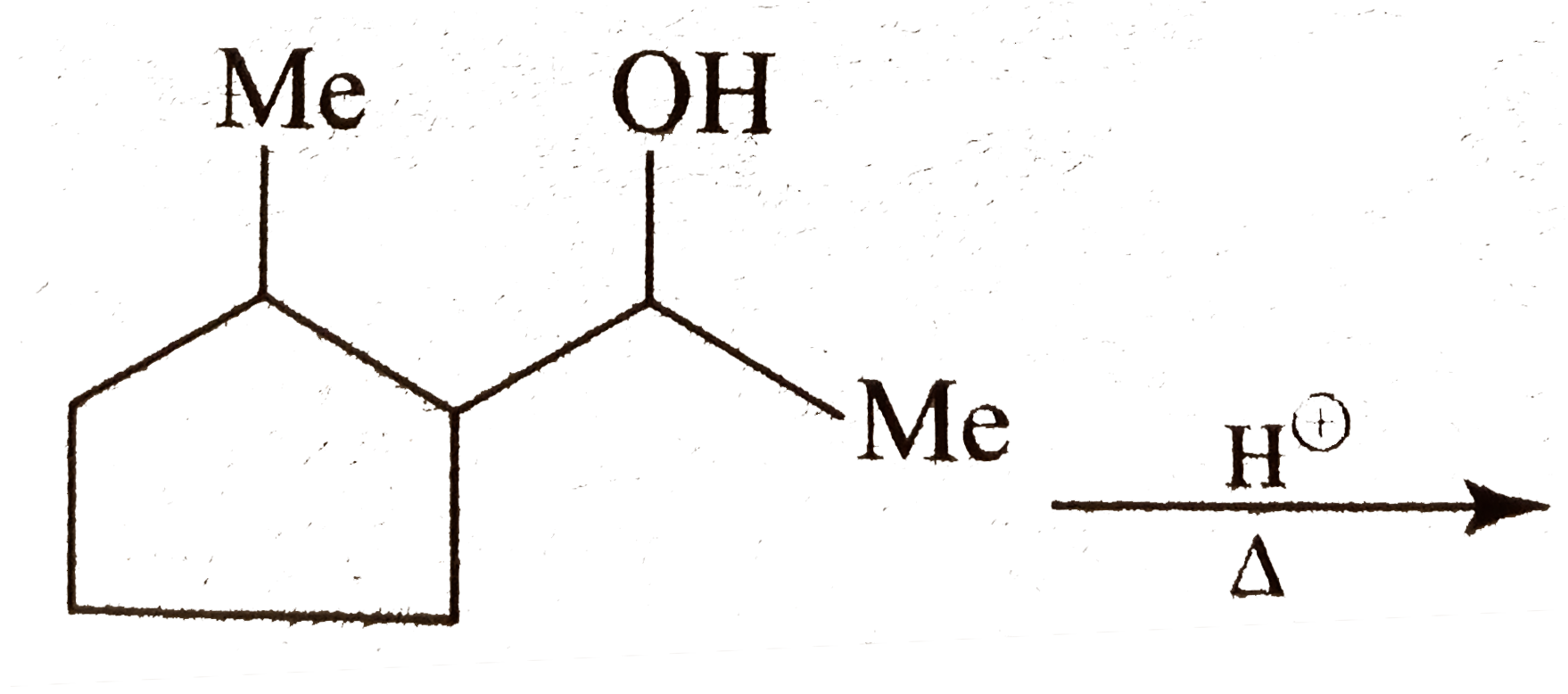
`b.` Alcohols are converted to alkenes by using `POCI_(3)` and organic base. Explain that whyc this is an effective method.
`c.`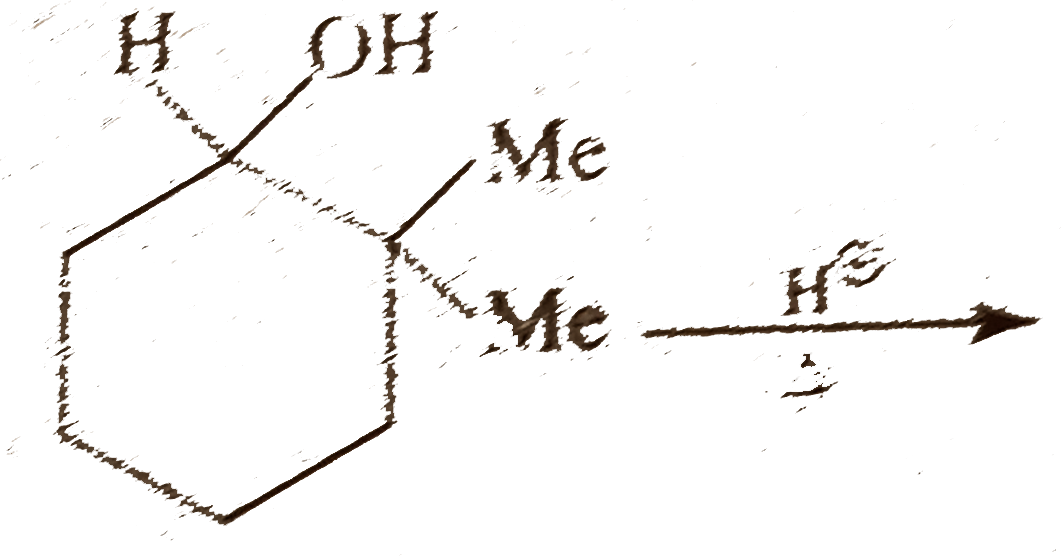 , `d.`
, `d.` 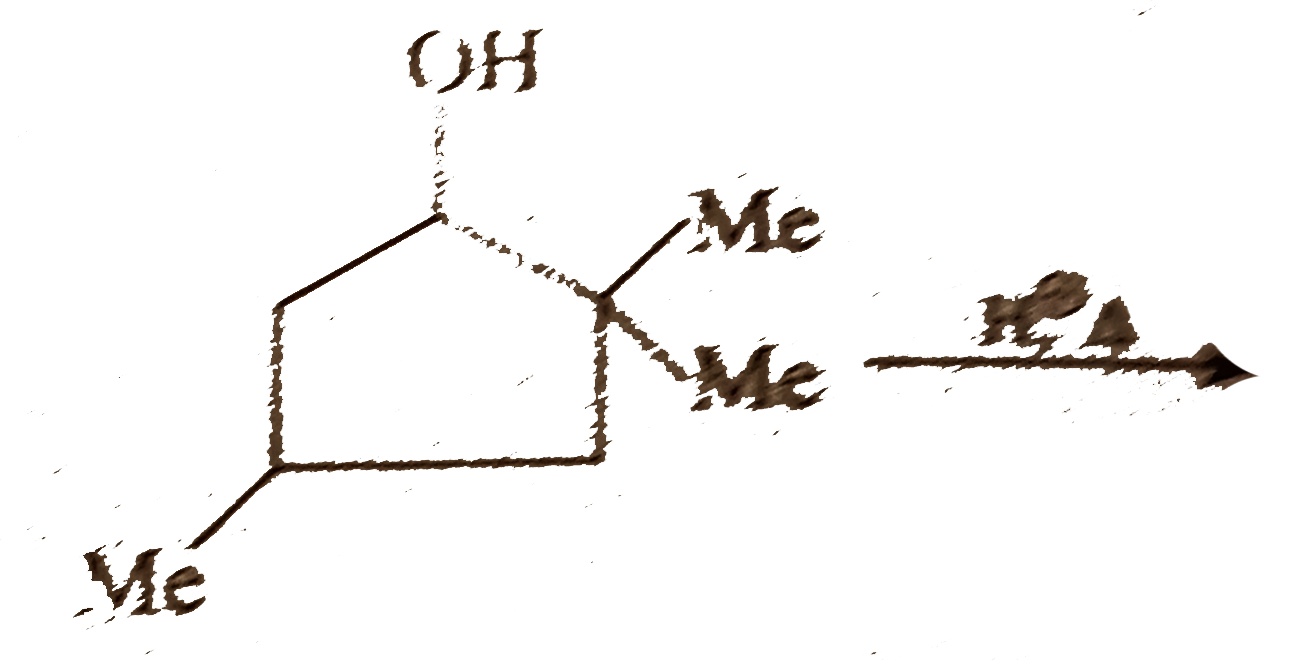
`e.`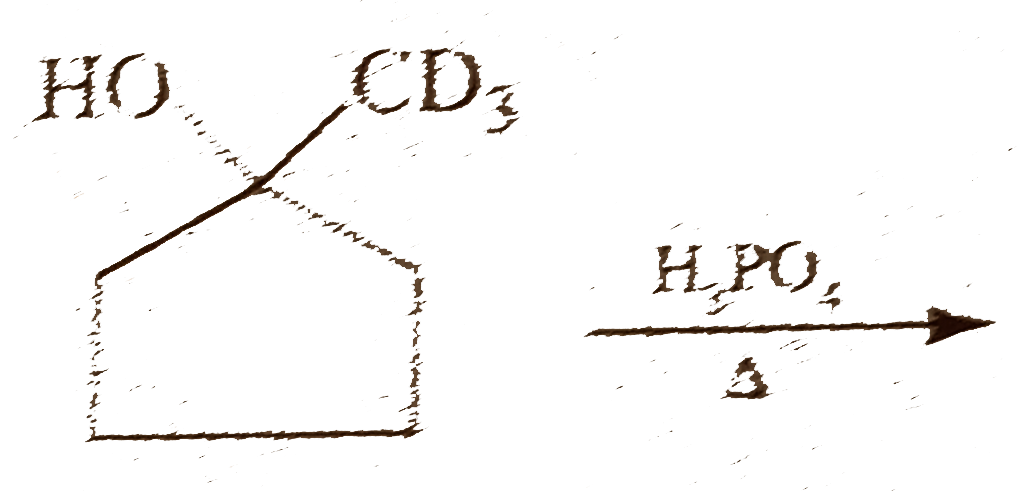
`f.`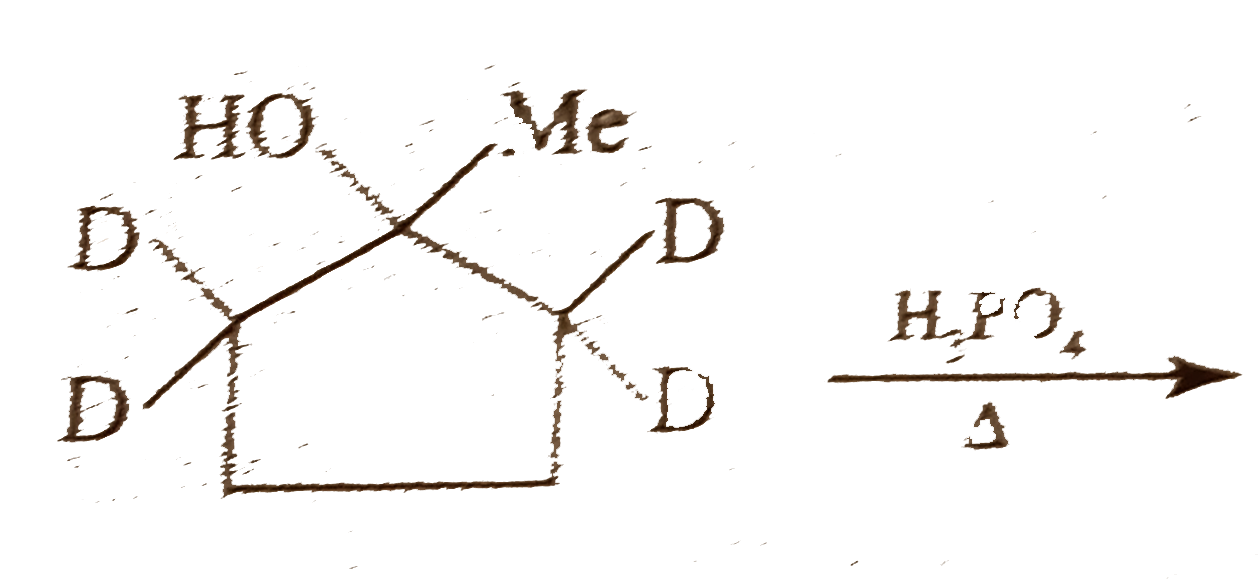
`g.`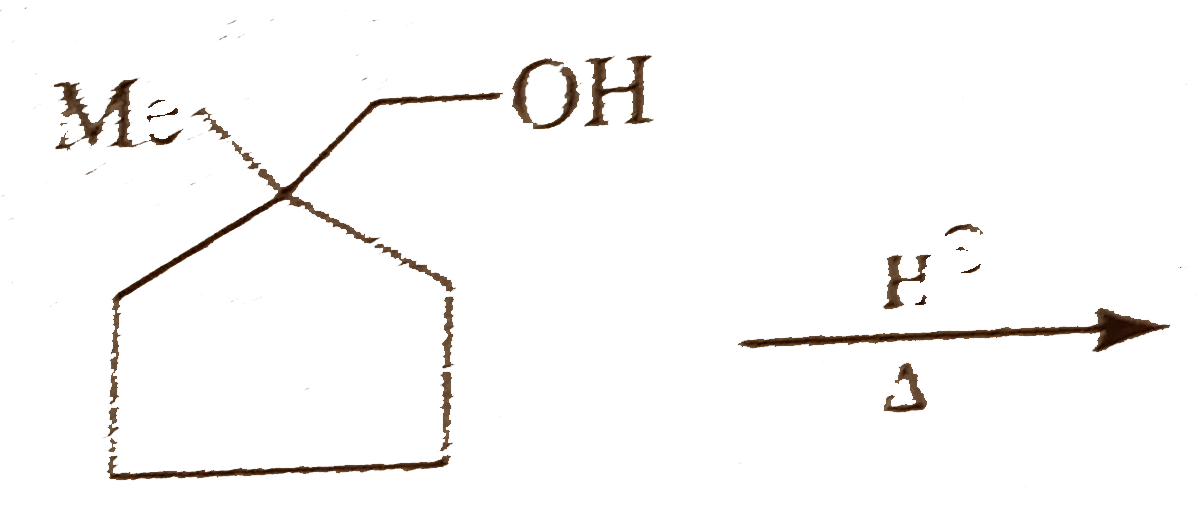
View SolutionGive the reaction of the following `:`
`i.`
`ii.` `2-`Bromo butane `+ C_(2)H_(5)Ona(` three products `)`
`iii.` `4-`Iodo`-4-n-`propyl heptane `+C_(2)H_(5)Ona`
`iv.` Give the reactivity order of the following bases `:`
` HO^(Θ),RO^(Θ),RCOO^(Θ),CN^(Θ),NO^(Θ)`,
View SolutionGive the decreasing order or reactivity for the elimination with strong bases of `RX(X=F,XI,Br, `and `I). `
`b.` How is this information important to decide between `E2` and `E1cB`?
View SolutionA compound `(A)` is a sodium salt of dibasic acid and on electrolysis gives a gas `(B),` gas `CO_(2)` at anode, and `H_(2)(g)` at cathode.
Gas `(B)` does not give any test for unsaturation, `i.e.,` it does not decolourise `Br_(2)` water solution and aqueous `KMnO_(4)` solution.
Gas `(B)` on reaction with `(H_(2)+Pt)` at room temperature does not react but at `120^(@)C`, gas `(B)` gives butane. Identfy `(A)` and `(B)`
View SolutionGive the structure of an optically active alkene `(A)` having the lowest molecular mass, which on catalytic hydrogenation gives an optically inactive compound `(B)`.
View SolutionGive the structure of an optically active alkyne `(A)` having the lowest molecular mass, which on hydrogenatio with Lindlar's catalyst and Birch reduction gives the same lowest molecular mass optically active alkene. Also explain why. ltbr. But alkyne `(A)` on hydrogenation with `D2`, with Lindlar's catalyst, and reduction with `Na+ `liq. `ND_(3)+EtOH` gives a different optically active alkene. Explain.
View SolutionGive the structure of an optically active unsaturated hydrocarbon `(A)` with the lowest molecular mass. Give the products of `(A)` with `:`
`a.` `H_(2)+Pd+BaSO_(4)+S` or quinoline in boiling xylene,
`b.` `K+Liq.NH_(3)+ETOH,`
`c.` `D_(2)+`Piosoned `Pd,`
`d.` `Na+Liq.ND_(3)+EtOH`, and
`e.` `Na+Liq. NH_(3)+EtOD.`
View SolutionExplain the formation of `(A)` and `(B)` in the following reaction.
`Oct-1-en eoverset(NBS+C C I_(4))underset(hv)rarrunderset((80%))((A))+underset((20%))((B))`
View SolutionGive all the possible products from the reaction of `NBS` with `4-`methyl `-` pent `-2-`ene` with the relative yields.
View SolutionComplete the following reactions `:`
`a.` `(F)overset (+D)larr(E)overset(1.Li)underset(2.Cu l)larr (D)overset(HBr)larrCH_(3)CH=CH_(2)overset(NBS)rarr (A) overset(NBr)underset(RCOOR)rarr(B) overset(Mg)rarr(C)`
`b.` `CH_(3)CH=CH-CH_(3)overset(2NBS)rarr(A)overset(2I^(c-))rarr(B) overset(H_(2)N NH_(2)//O_(2))rarr(C)`
`c.`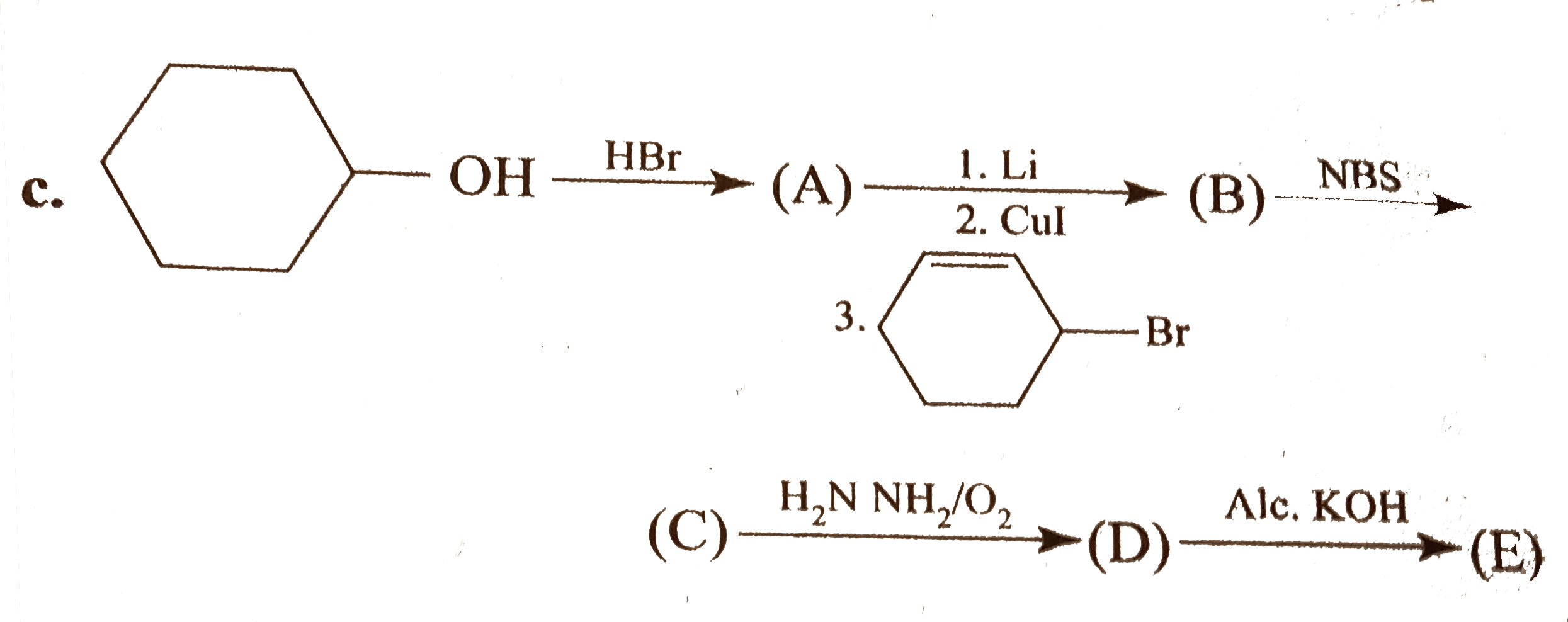
`d.` `CH_(3)-CH=CH_(2)overset(Cl_(2))underset(Delta)rarr(A) overset(1.Li)underset(2. Cu l)rarr(B)overset(ClCH_(2)CH=CH_(2))rarr(C)`
`e.`
. `f.`
View Solution`a.`

`b.`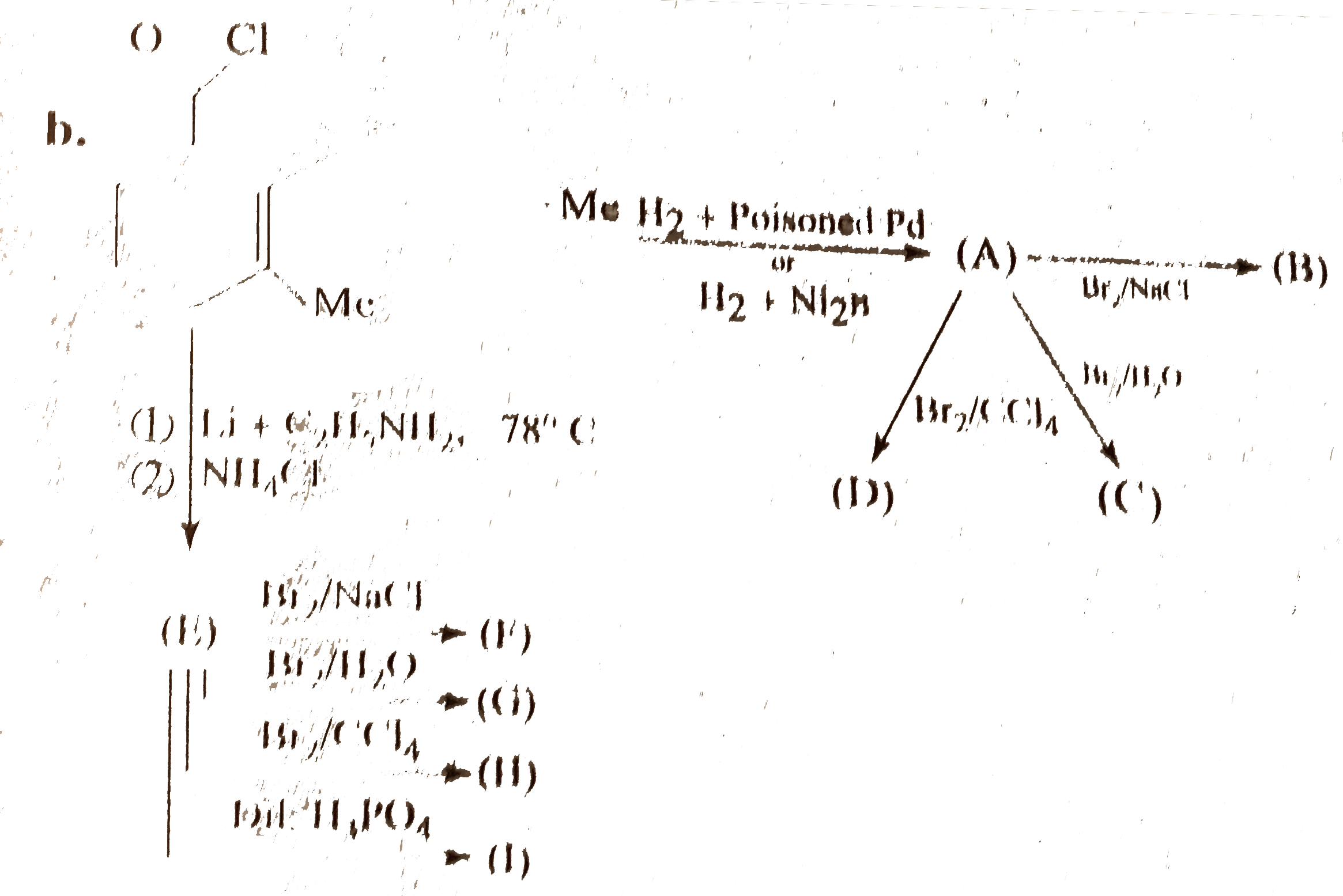
`c.` Tetrachloroethane does not give the test for unsaturateion , `i.e.,` it does not decolourise `Br_(2)` water solution. Explain why.
`d.`
`e.` Ricinoleic acid is isolated from castor oil. The structure of the compound is `:`

`f.` Explain why `1,2-`dimethyl cyclopenten or `1,2-`dimethyl cyclohexen with `HBr` undergoes anti`-(` or trans`-)` addition but with aqueous acid undergoes both anti`-` and syn`-(` trans and `cis-)` additions.
View Solutioni. Z-2,3-Dideuteroeo-but-2-ene `overset("Hydrobo ration")underset("bromination")rarr`
ii.E-2,3-Dideutereo-but -2-ene `overset("Hydrobo ration")underset("bromination")rarr`
iii. 1,2-Dideutereo cyclohexene `overset("Hydrobo ration")underset("bromination")rarr`
View SolutionComplete the following reactions`:`
`i.` `CH_(2)=CH_(2)` `overset(EtONa+eTOH)rarr`
`ii.` `F_(2)C=CF_(2)overset (EtONa+EtOH)rarr`
View Solution`a.` Convert butan`-1-`ol to `3-`chlorobutan `-2-`ol.
`b.` Convert propene to`:`
`i.`. `1-`chloropropane, `ii.` `2-`chloroproopane, `iii.` `2-`methyl pentane, `iv.` `2,3-`dimethyl butane , and `v.` pentane.
View SolutionConvert `:`
`a.` `1-`Bromobutane to `2-`bromobutane
`b.` `1-`Bromobutane to `1,2-`dibromobutane
`c.` `1-`Chlorobutane to `1-`bromobutane ltbr. `d.`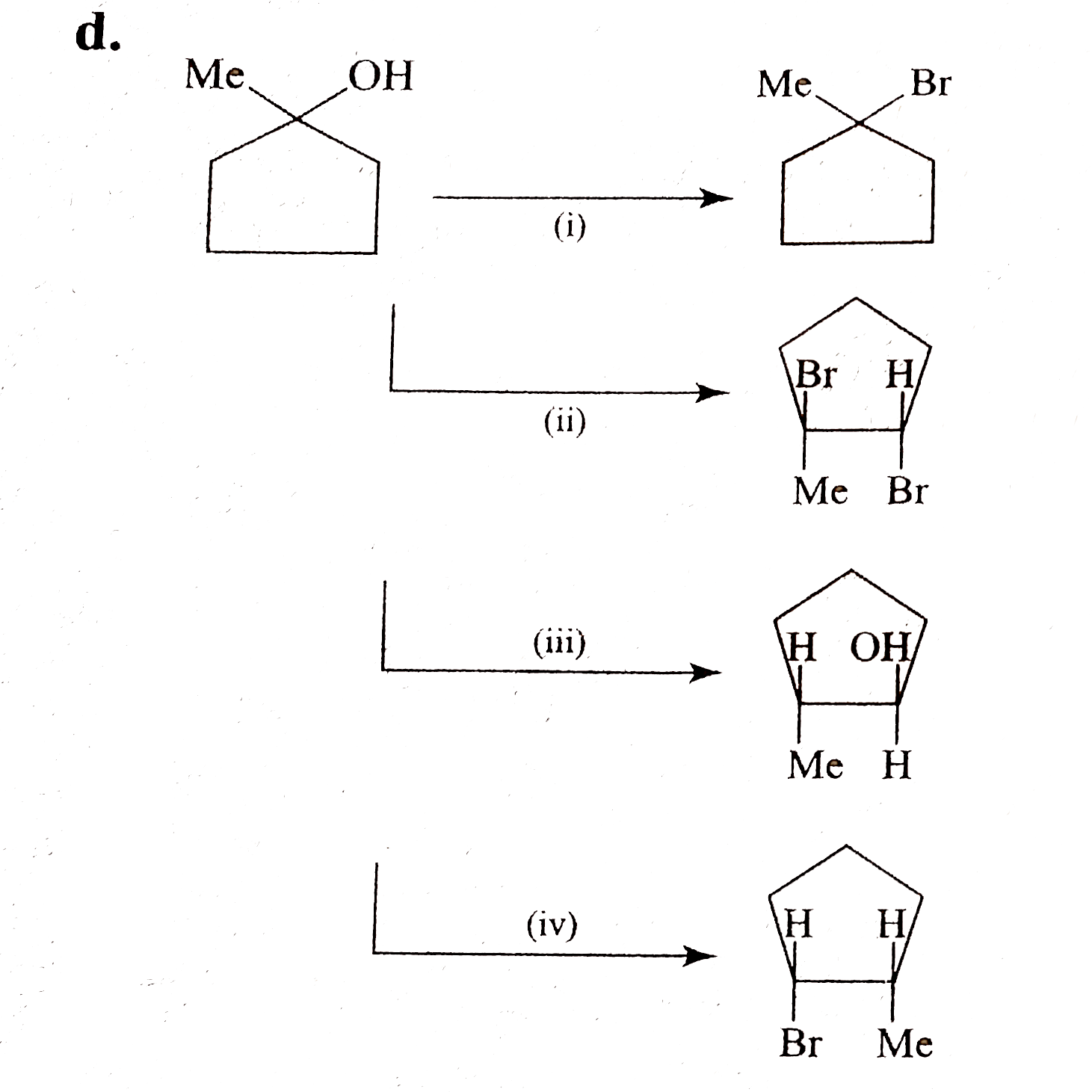
View SolutionConvert`:`
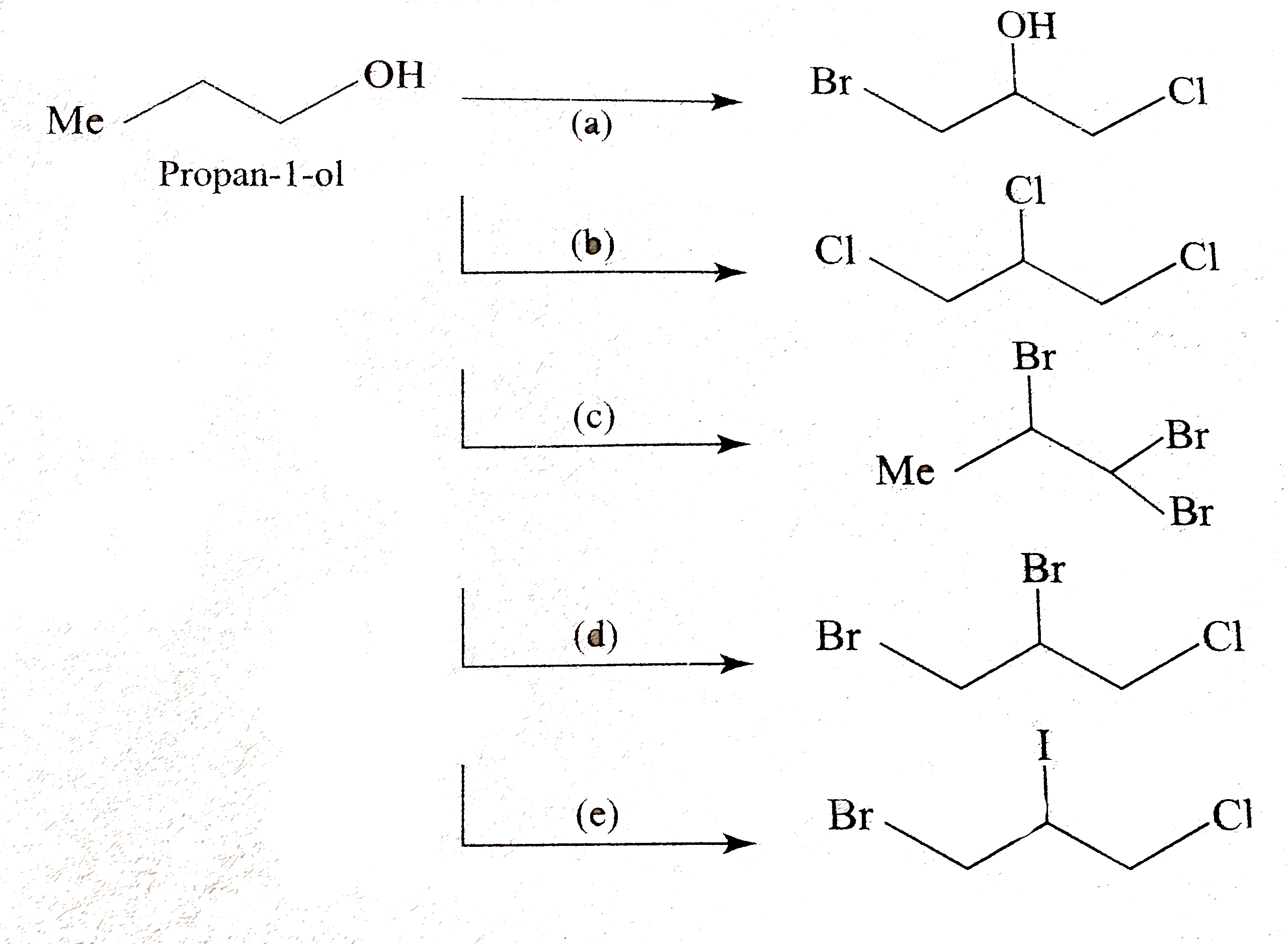
View SolutionWrite the monomer of the following polymer `:`
`a.` `P.M.M.A.` ,`b.` `H.D.P.E `
`c. P.A.N` , `d.` Styron
`e.` Teflon , `f.` Dieprene
`g.` Natural rubber `h`. Gutta `-` Percha
`i.` `P.P.`
View SolutionWhich of the polymer `(s)` in Example is `//` are optically active or chiral ?
View SolutionBased on the arrangement of branching of `[(R)-(Ph),` in case of styron of `(CH_(3))`, in case of polypropene `]` groups relative to long`-` chain backbone of the polymer, how many types of stereoisomers are possible for styron or polypropene ?
View SolutionConvert the following `:`

View SolutionIdentify compound `(A)`.
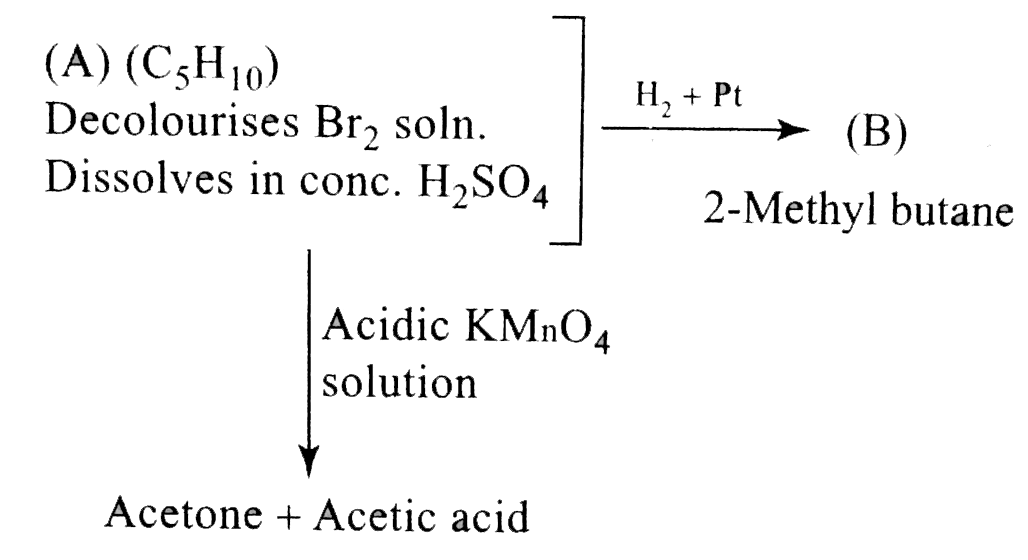
View SolutionIdentify compound `(A)` and `(B)`.
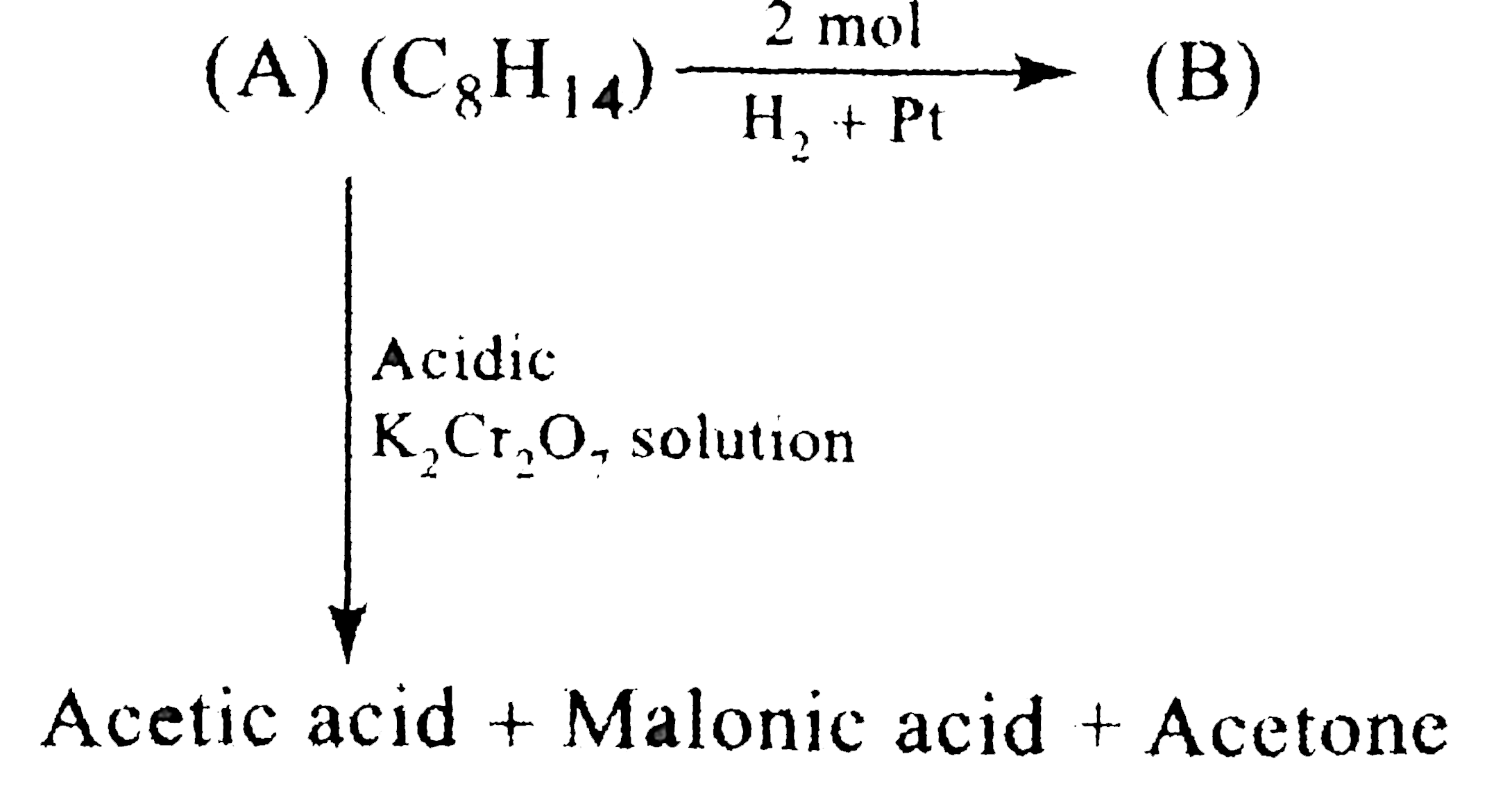
View SolutionIdentify compounds `(A)` and `(B)`
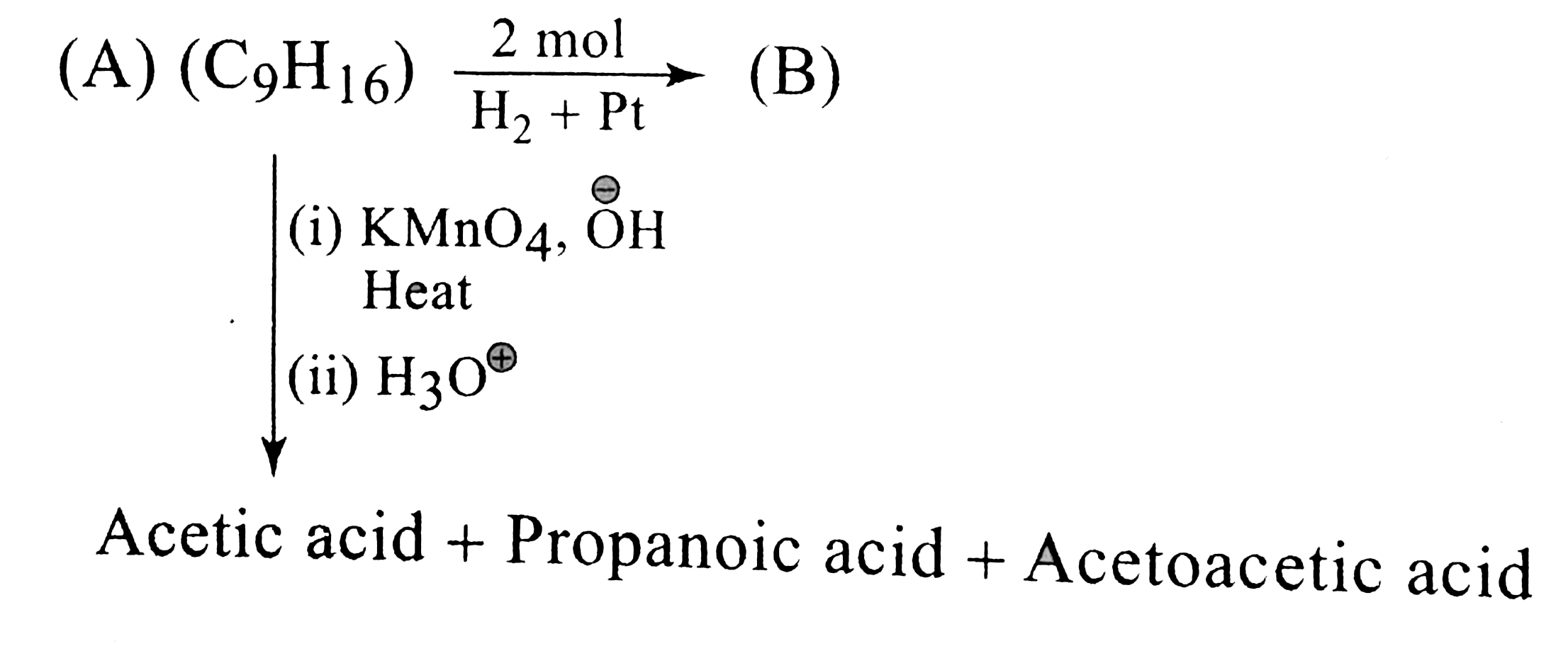
Acetic acid `+` Propanoic acid `+` Acetoacetic acid
View Solution`a.` Write the products of the reductive and oxidative ozonolyses of mesitylene.
`b.` Give the structure of the alkene `(C_(4)H_(8))` which when treated with dil. `H_(2)SO_(4)` give `C_(4)H_(10)O`, which is non`-` resolvable.
`c.` Give the structure of the alkane `(C_(4)H_(8))` which adds `HBr` in the presence and absence of peroxide to give the same product `C_(4)H_(9)Br.`
`d.` Arrange the following in the decreasing order of their reactivity towards alkenes `:`
`i. HCI,ii.HBr, iii. HI,iv. HF.`
View Solution`a.` Identify compound `(A)` in the following reactions.
Compound `(A)overset(O_(3)//H_(2)+Pt)rarr2-`Methyl butanal and pentan `-2-`ene
`b.` Identify `(A)` and `(b)`.

View SolutionGive the product of the following with `:`
`a. O_(3)//Zn-CH_(3)COOH` ,`b. O_(3)//H_(2)O` ,`c. O_(3)//H_(2)O_(2),`
`d.` acidic `KMnO_(4)` and `e.` cold alkaline `KMnO_(4)`.
`i.`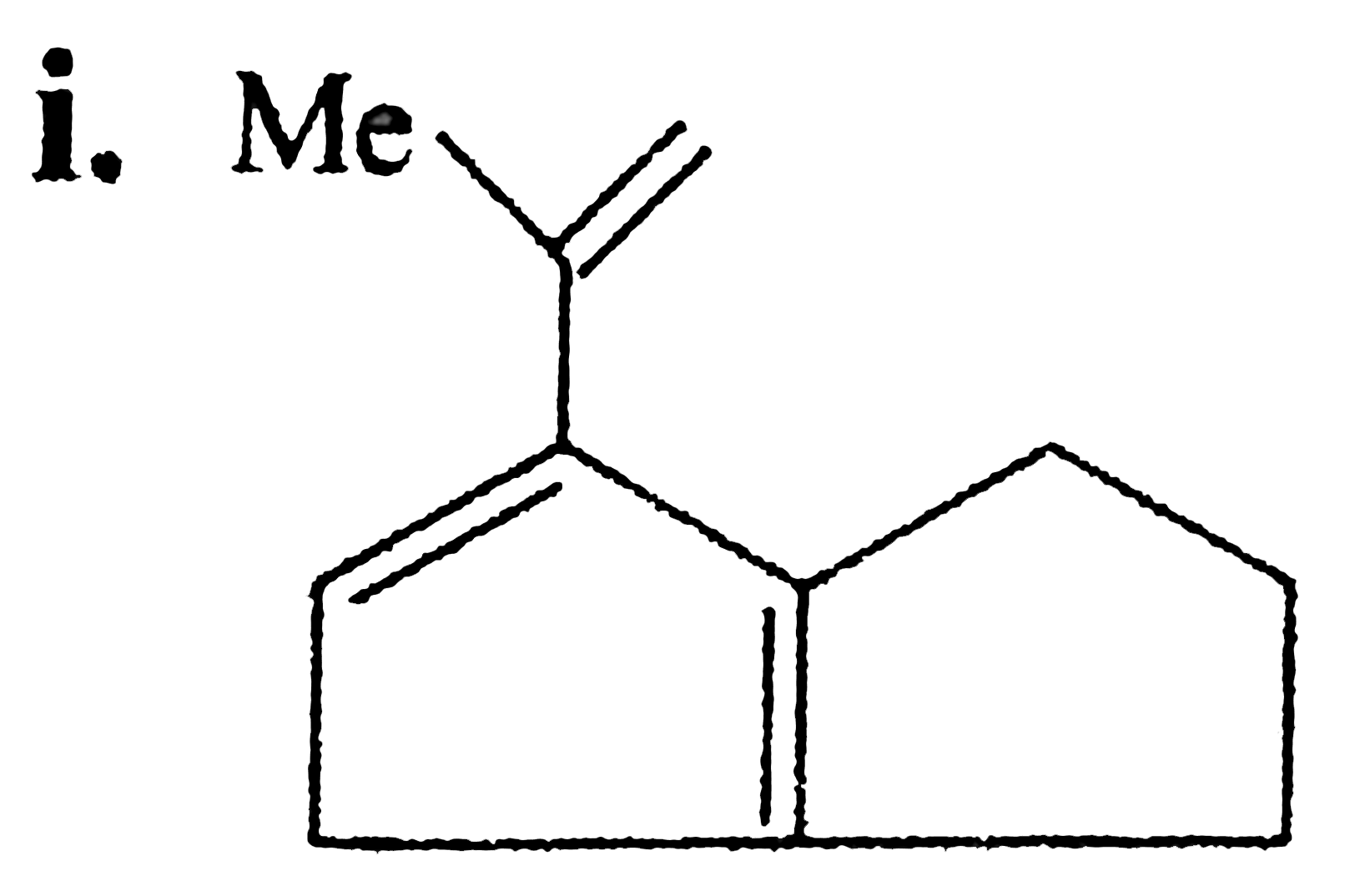
`ii.`
`ii`.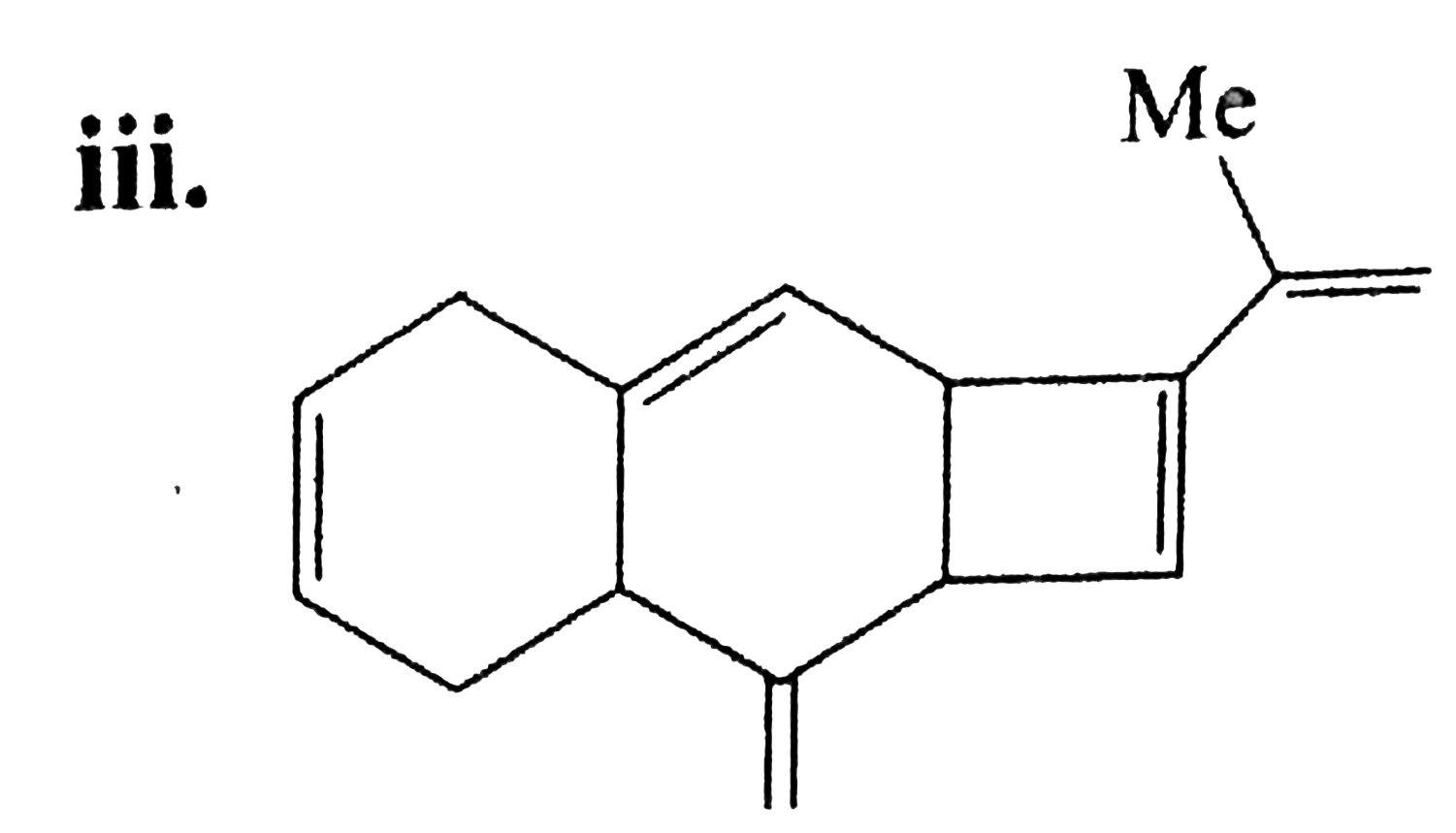
View SolutionWrite the structural lformulae for the compounds that yields the following products on reductive ozonolysis.
`a.` `2 mol ` of butan `-2- `one
`b.` Methanal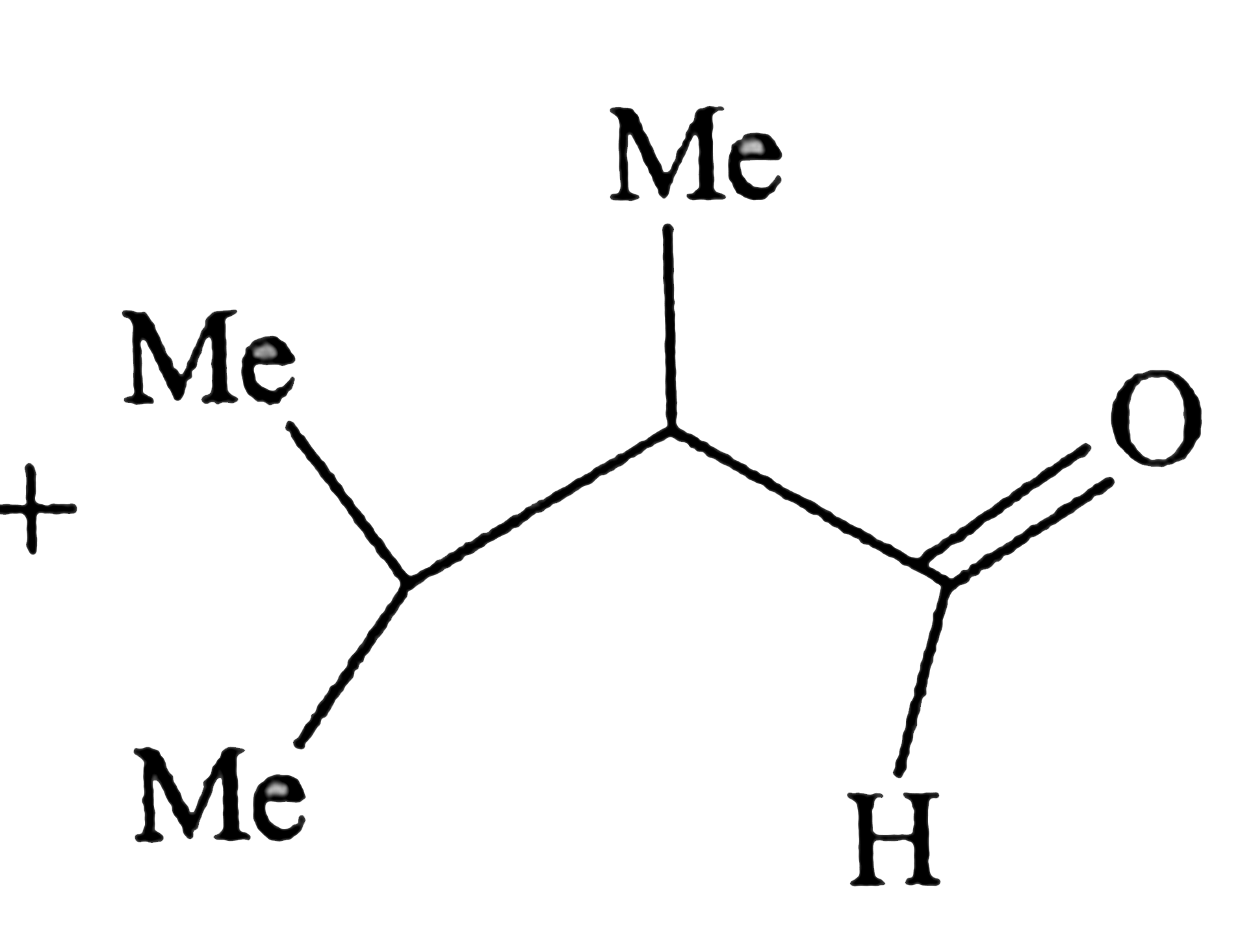
`c.` Pentan `-3-`one `+` Glyoxal `+` Propanal
`d.` Pretan `-1,5-` dial
`e. ` `2 mol ` of
View SolutionGive the product obtained from the oxidation of the following compounds with acidic `K_(2)Cr_(2)O_(7).`
`a.` Cyclobutene , `b. 1-`Methyl cyclobutene
`c.` `1,2-` Dimethyl cyclobutene , `d.` An alkene, `C_(4)H_(8)`
View SolutionComplete the following reaction

View SolutionComlete the following reaction `:`
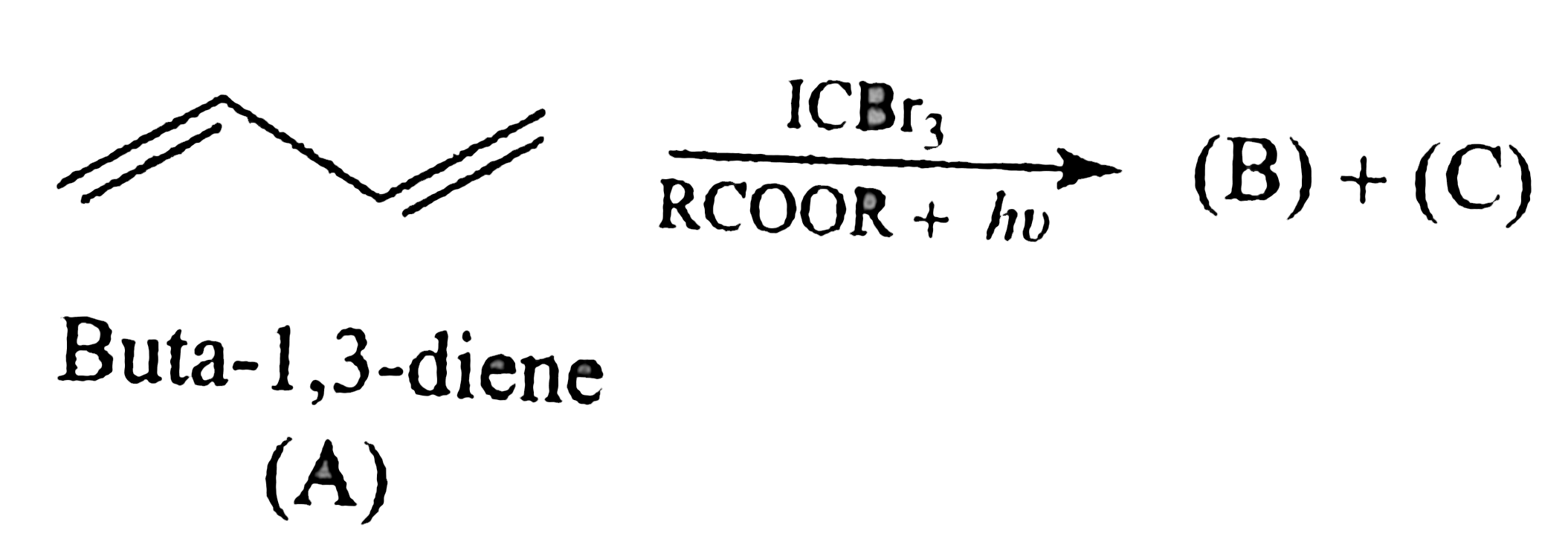
Also write the mechanism of the reaction.
View SolutionGive all the structural isomers `(` excloding stereoisomers and allenes `)` of diene with the molecular formula `C_(6)H_(10)`.
View SolutionComplete the following reaction `:`

Also write the mechanism of the reaction.
View SolutionWrite all the resonating structures of `:`

Which of these carbons will react with `Br^(Θ)` to give thermodynamically favoured product ?
View SolutionConver `:`
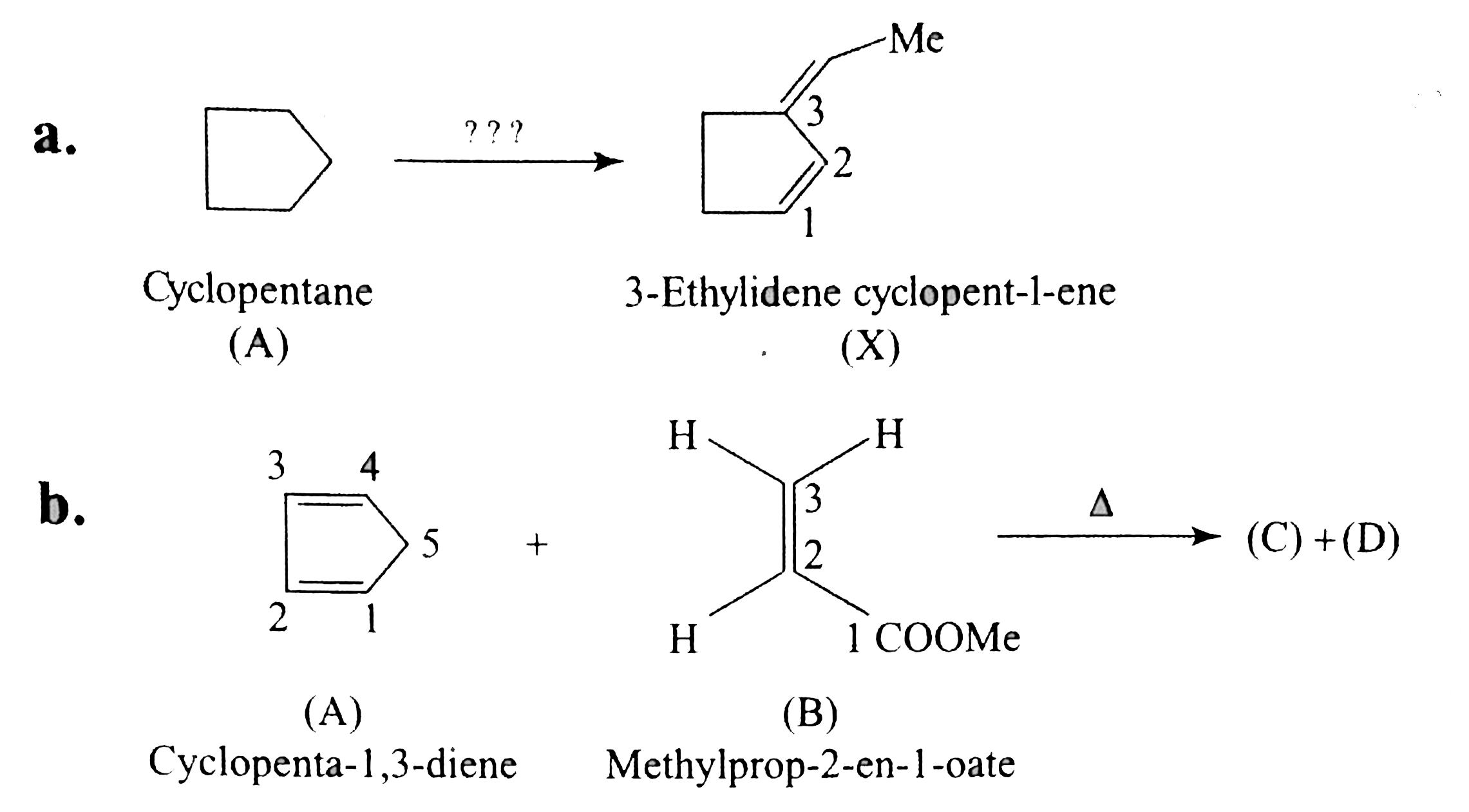
Which product is kinetically favoured and which product is equalibrium favoured ?
`c.`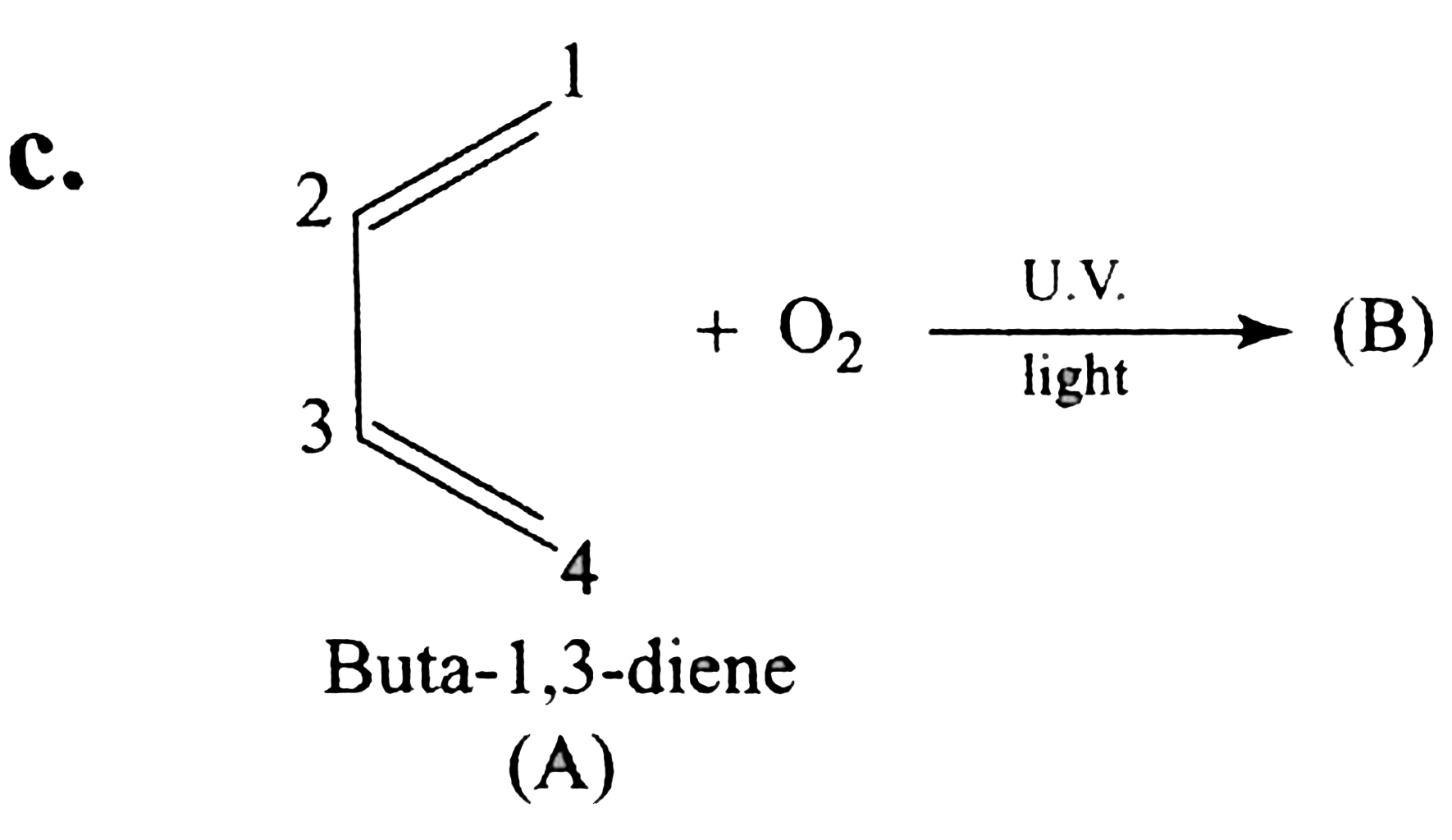
View SolutionGive the name and structure of the lowest molecular mass cumulative polyene that shows only geometrical isomeris `(` diastereomers `)` and not optical isomers.
View SolutionComplete the following reaction
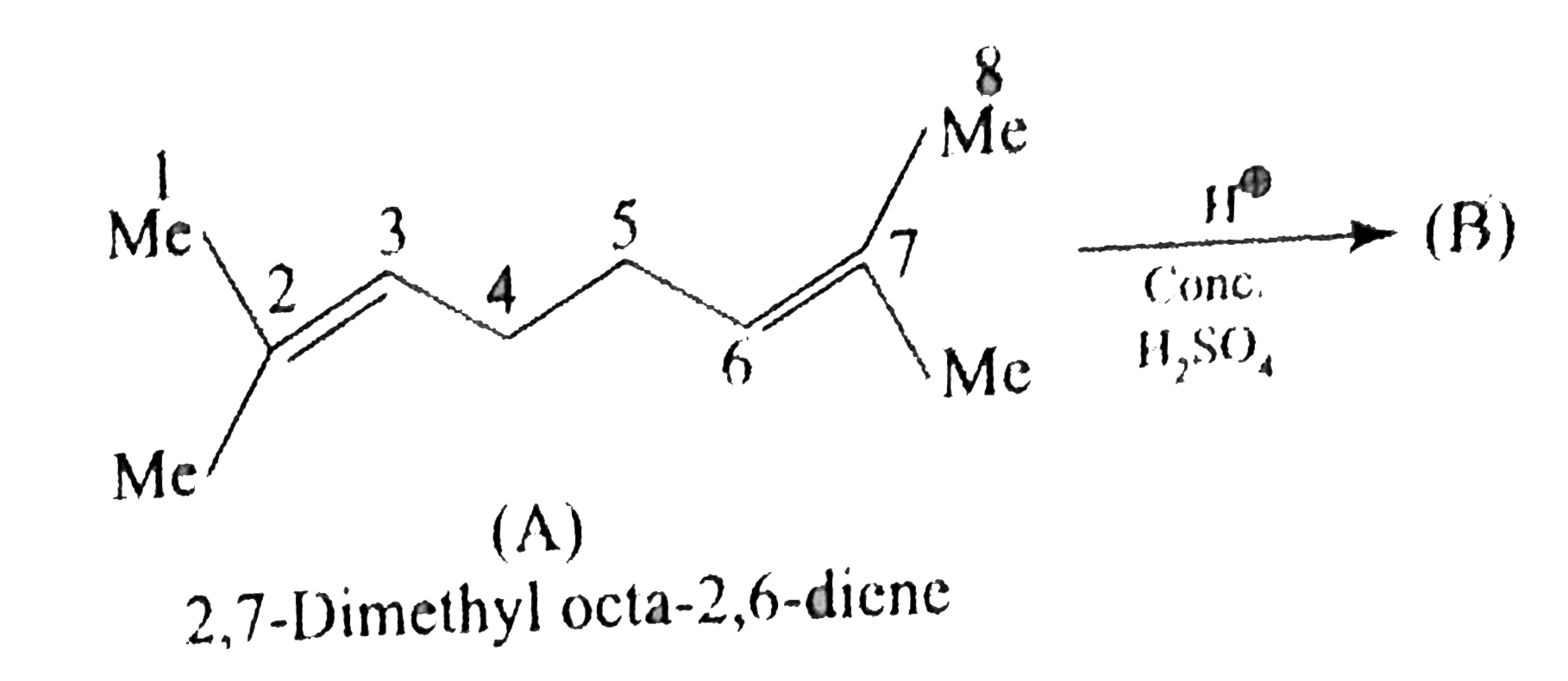
View Solution
SOLVED Example questions and complete solutions for chapter ALKENES AND ALKADIENES of CENGAGE CHEMISTRY (HINGLISH) of Class 11